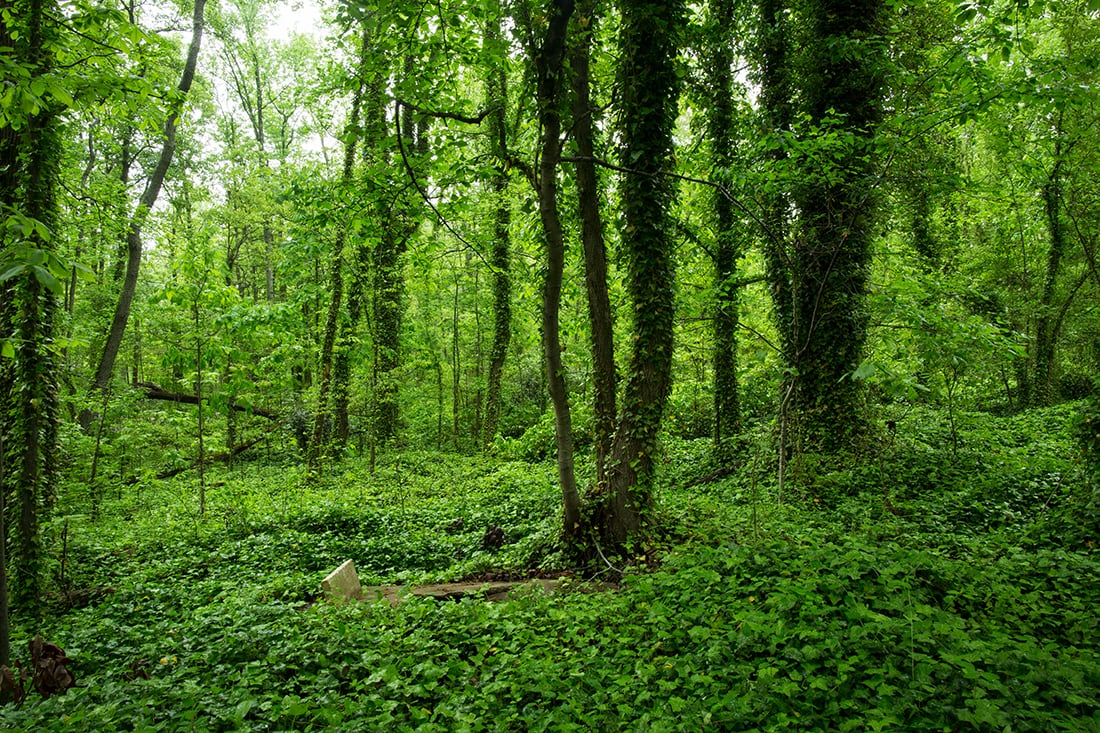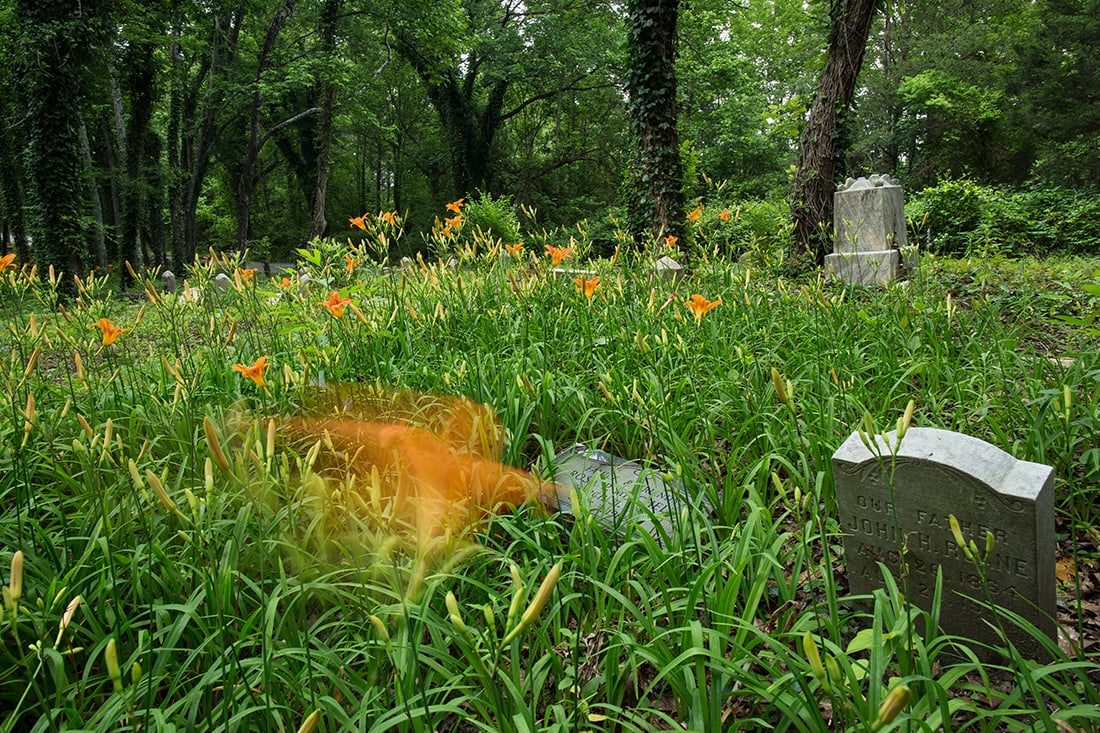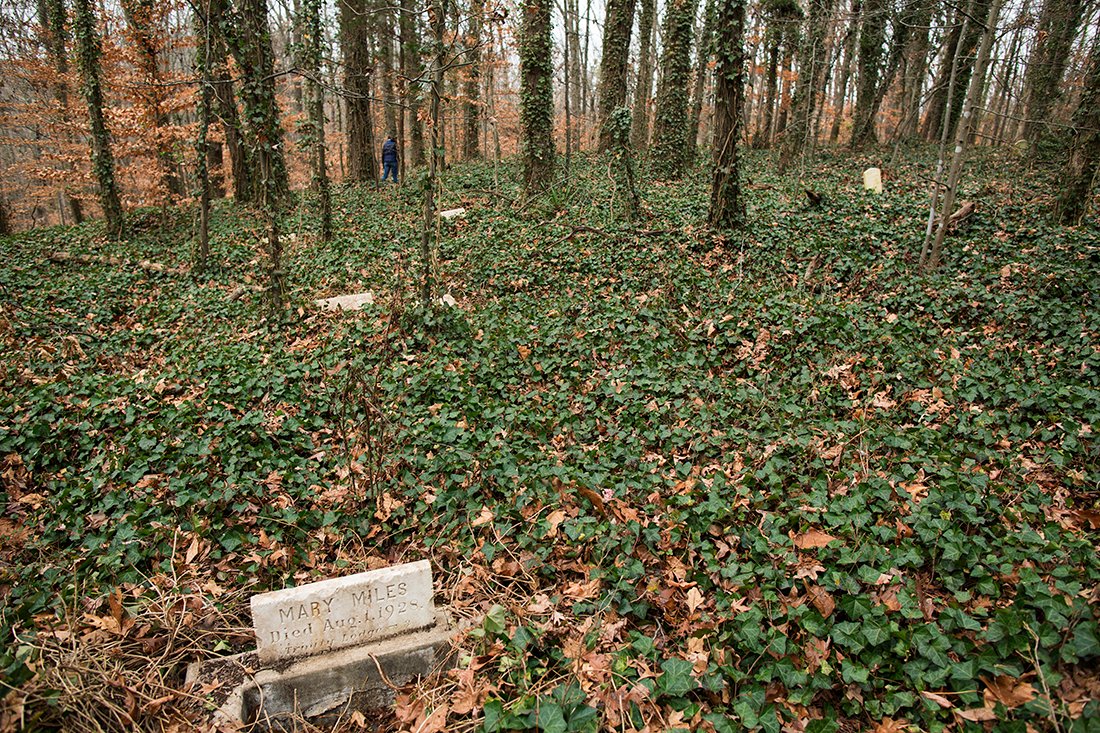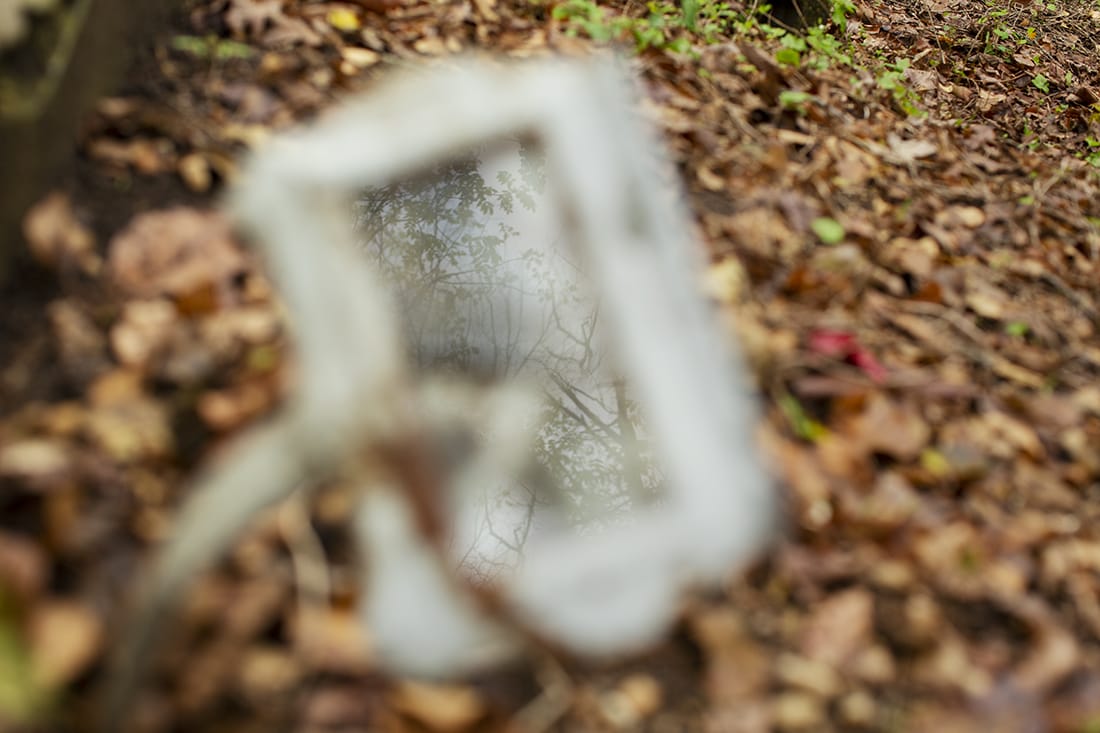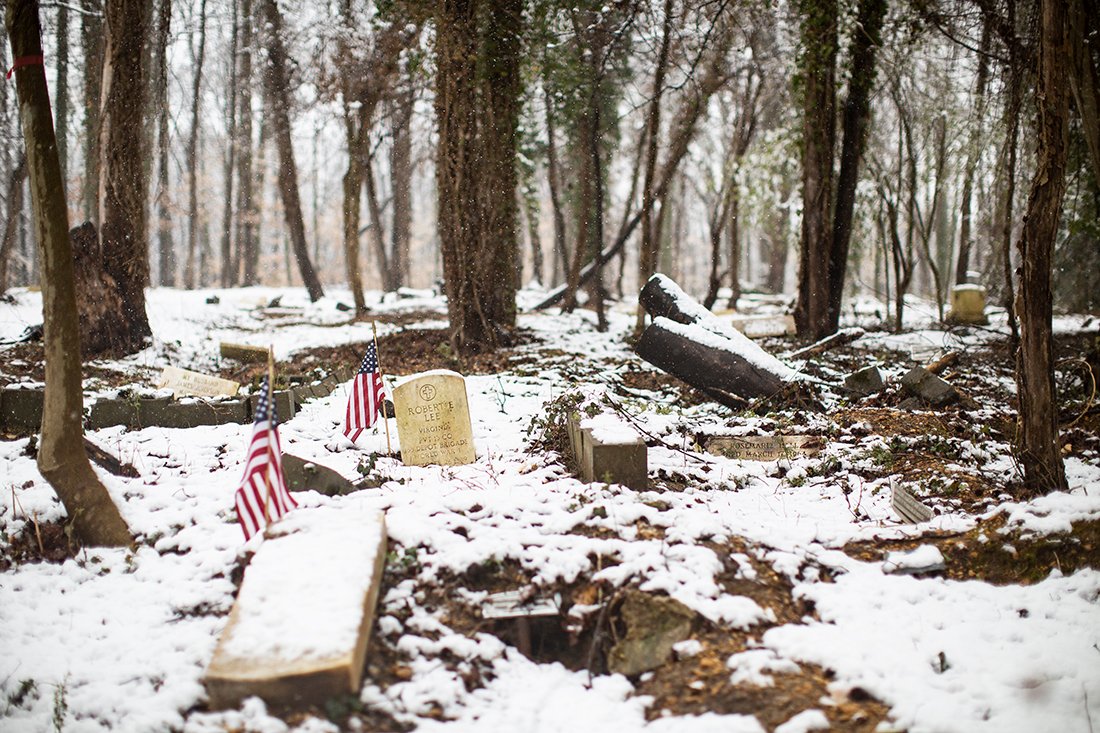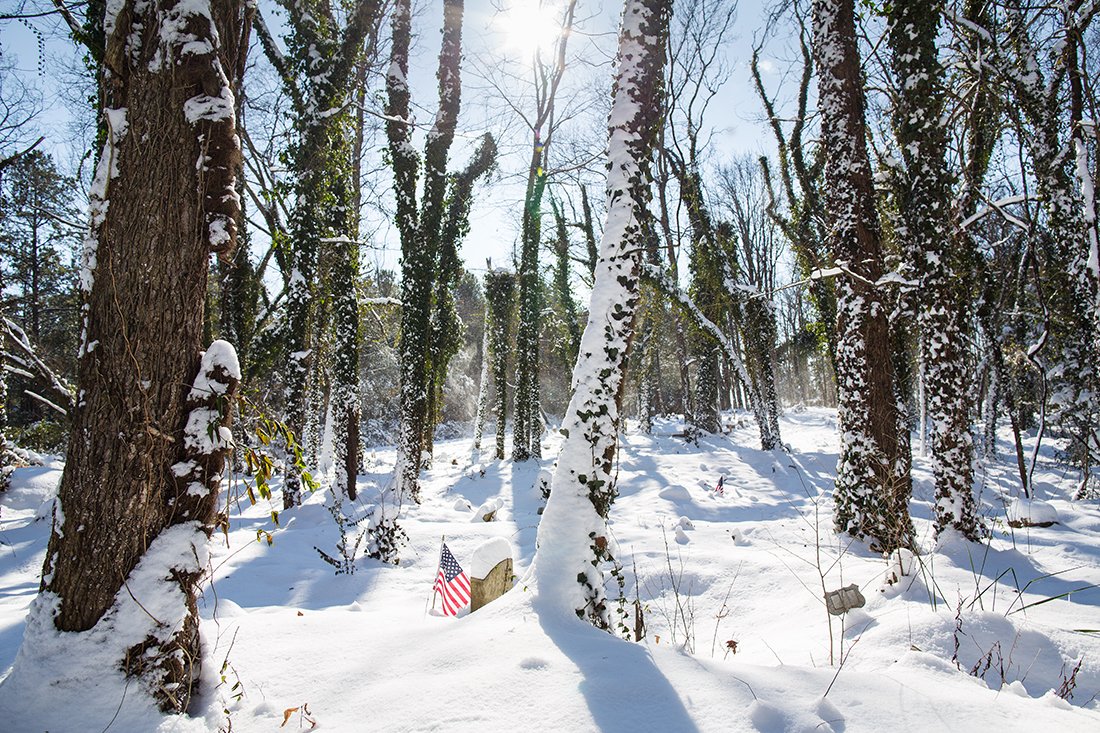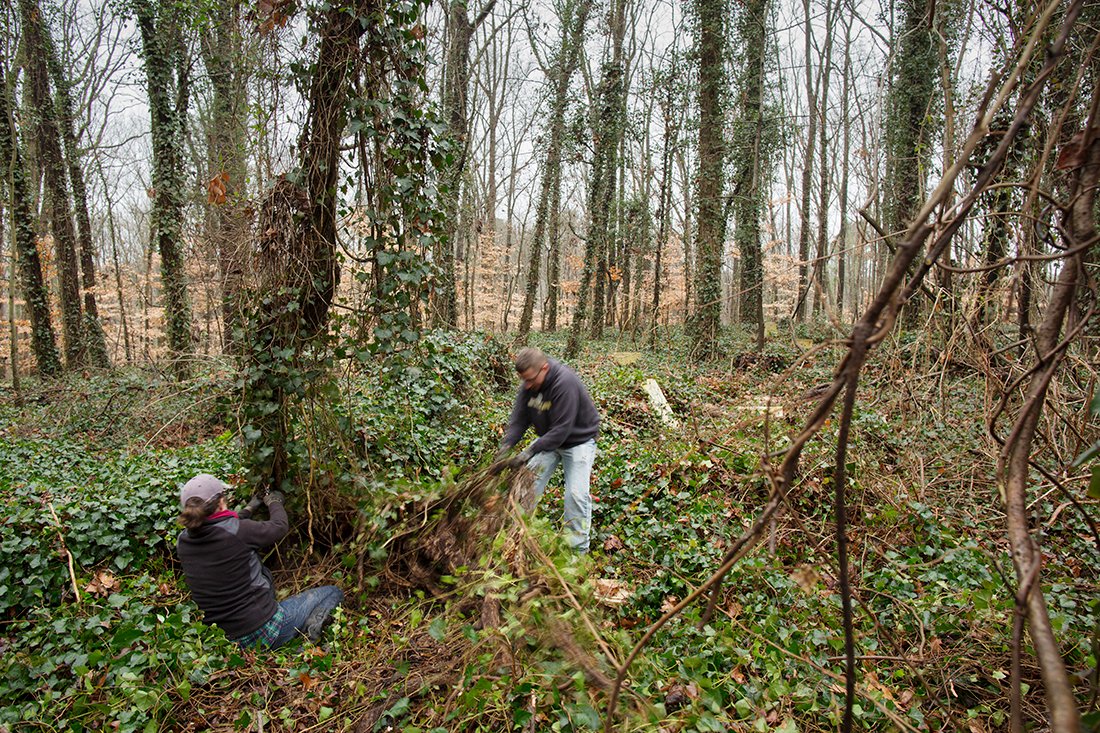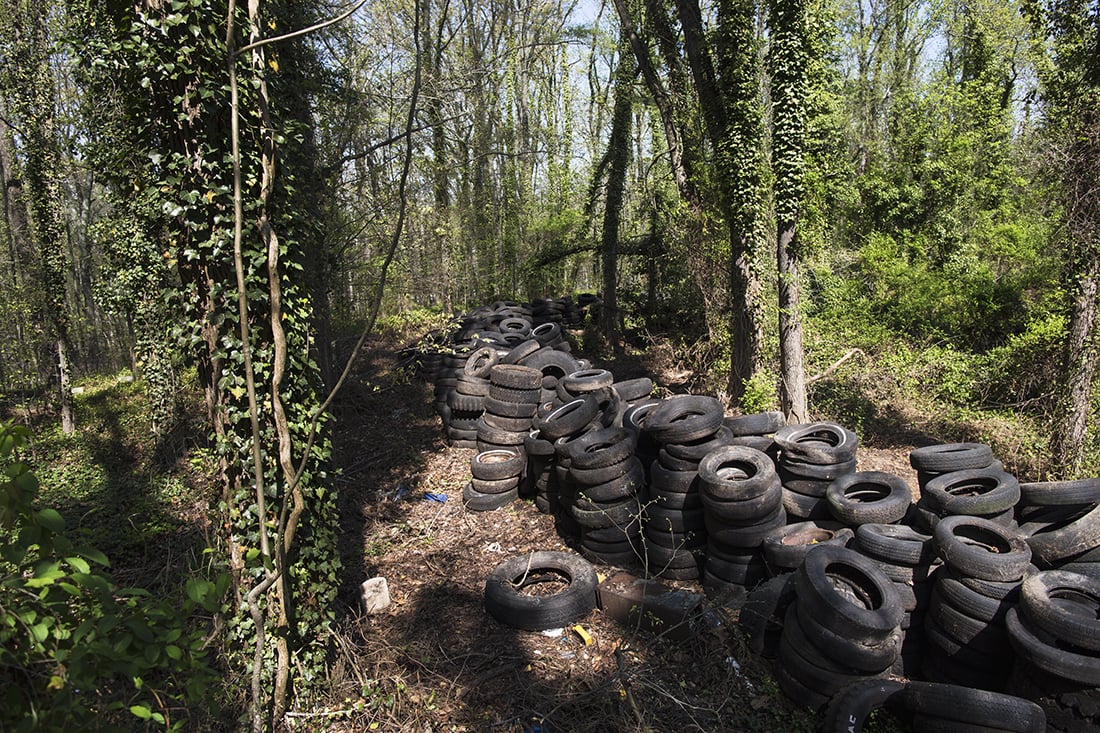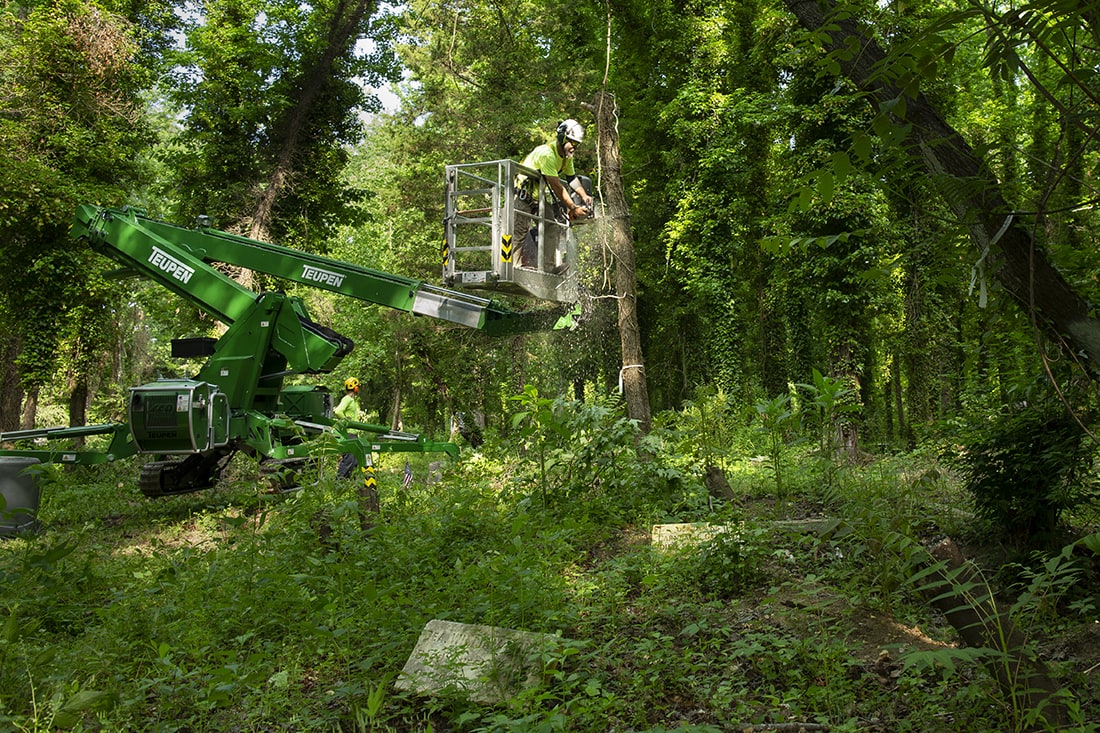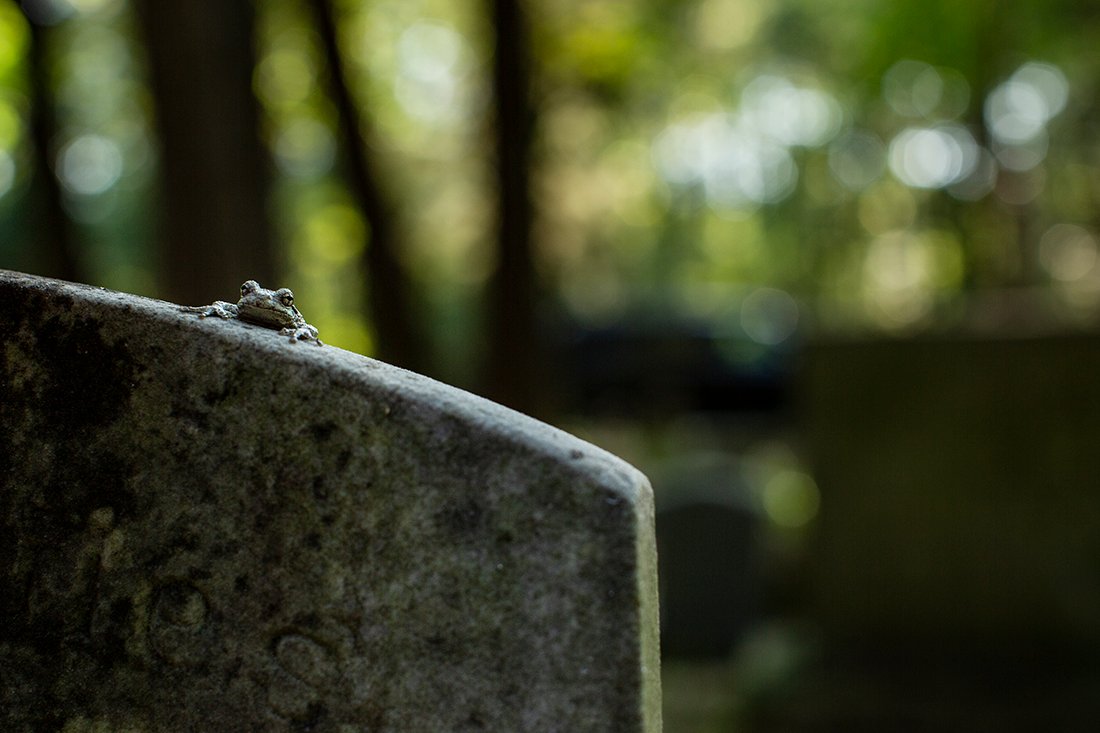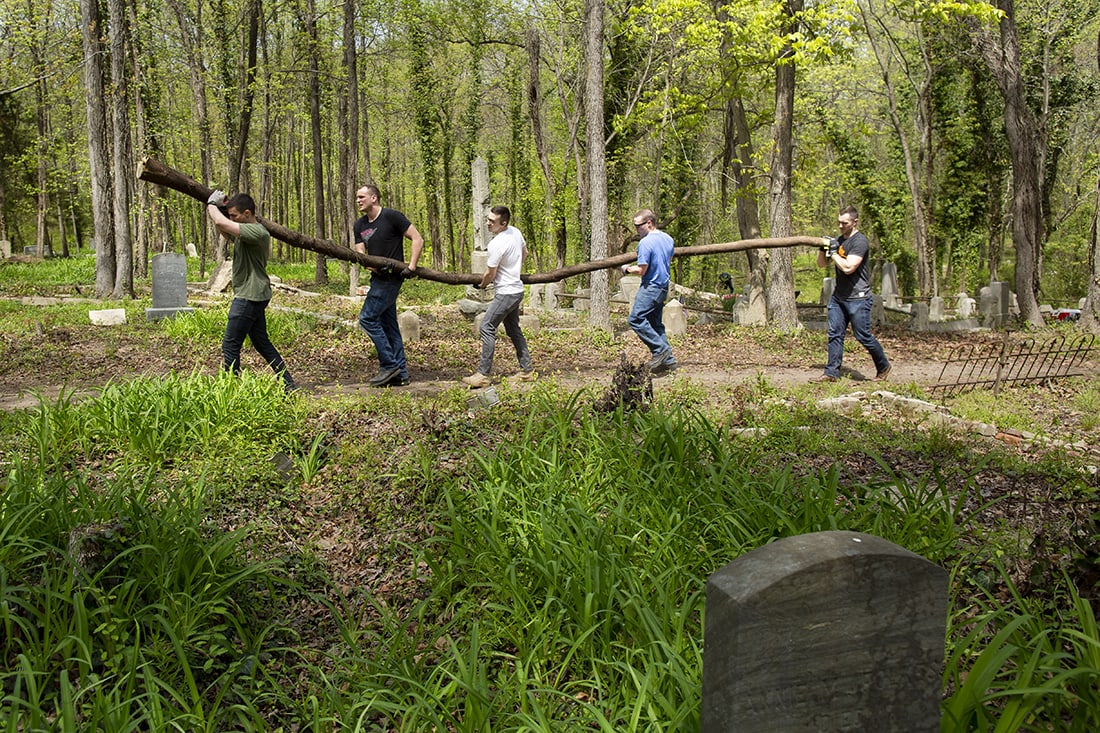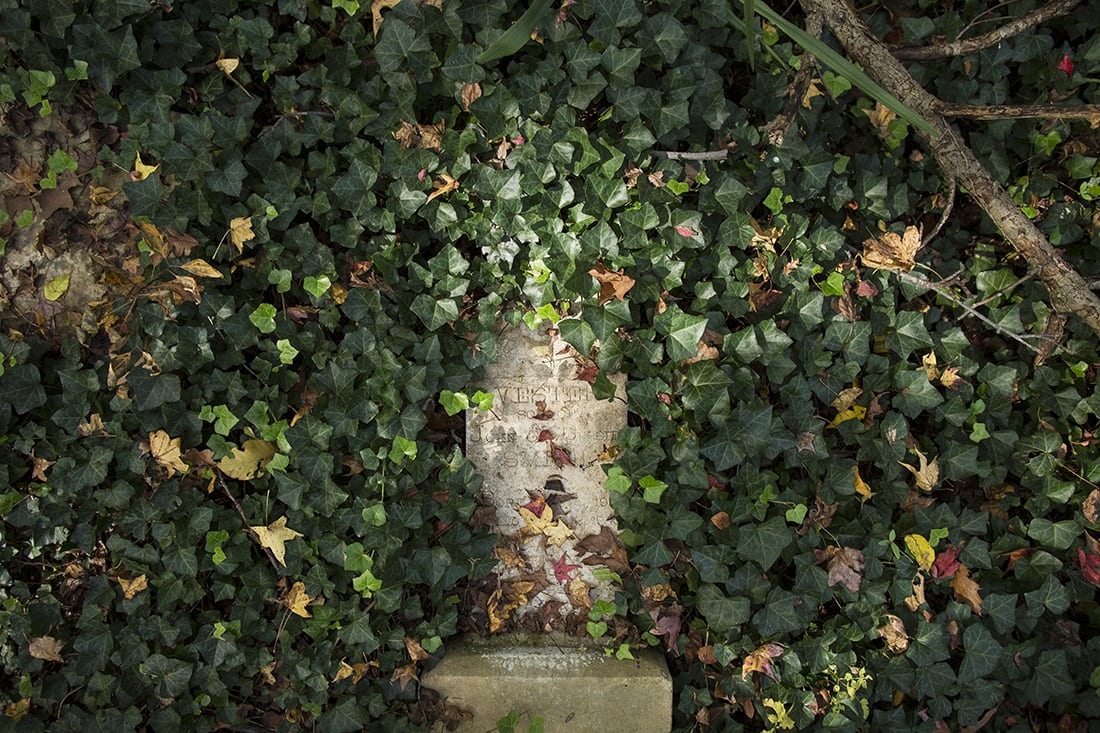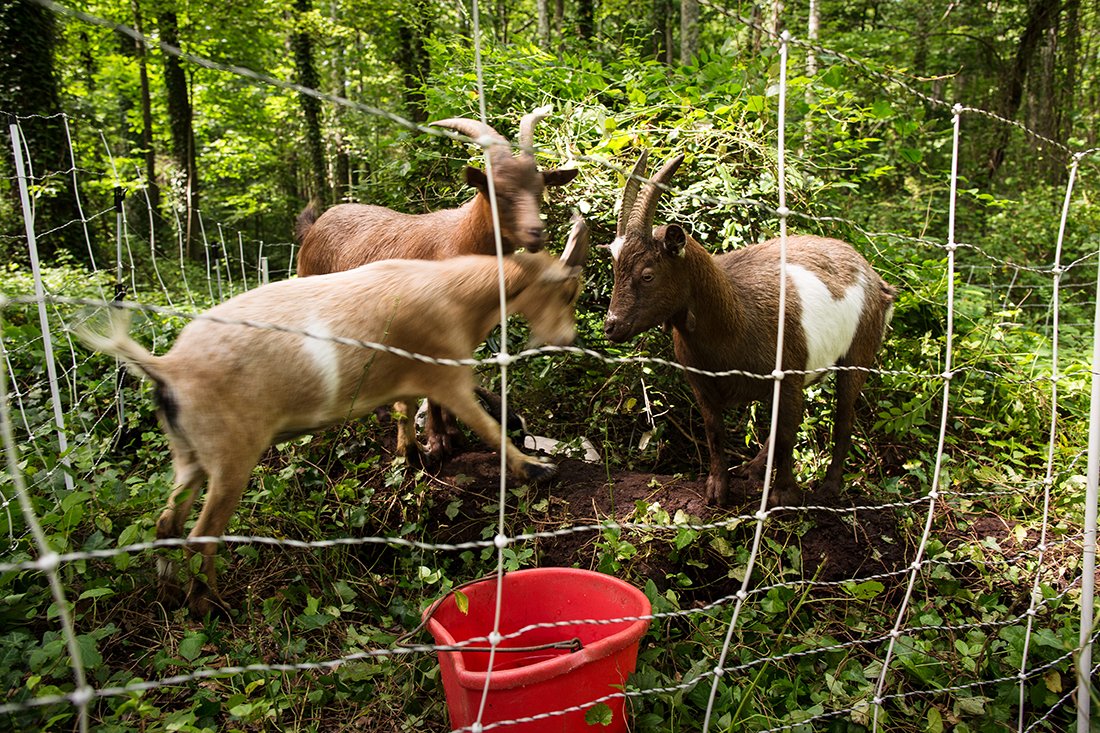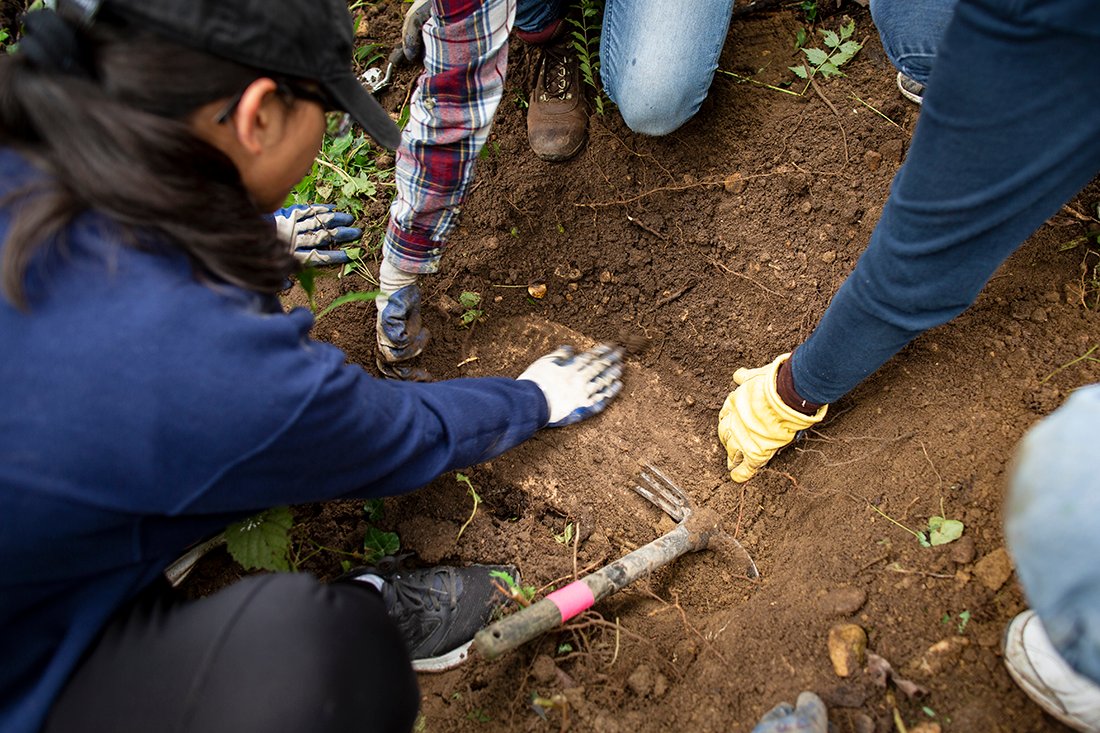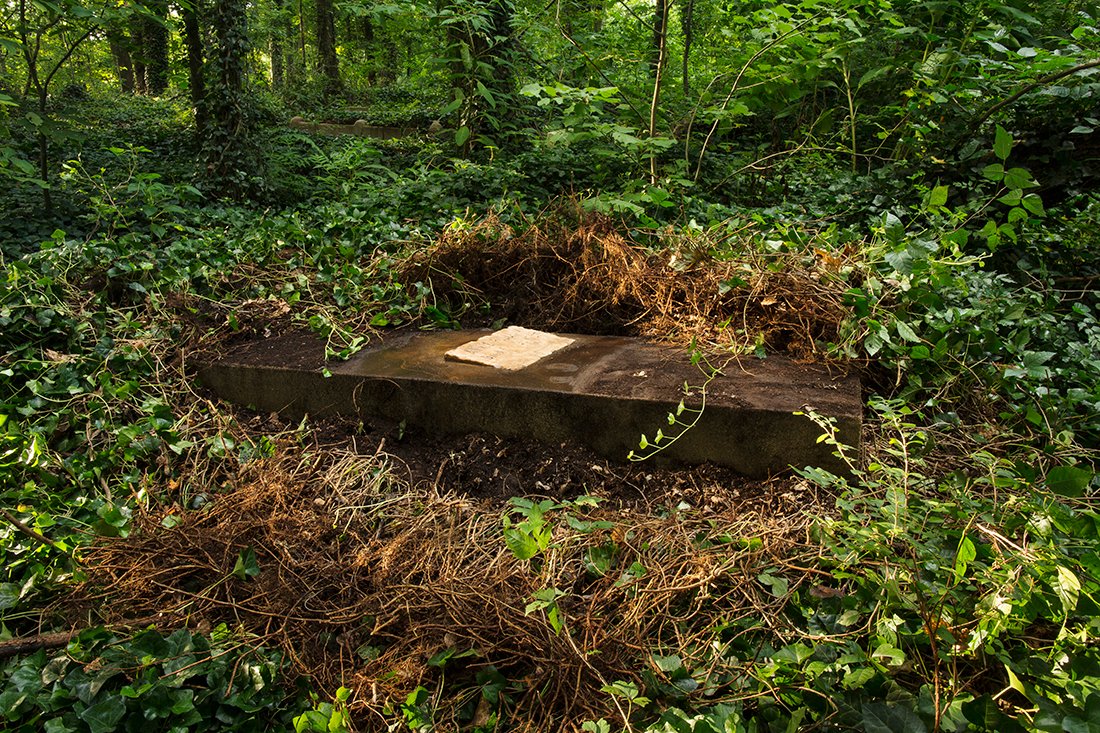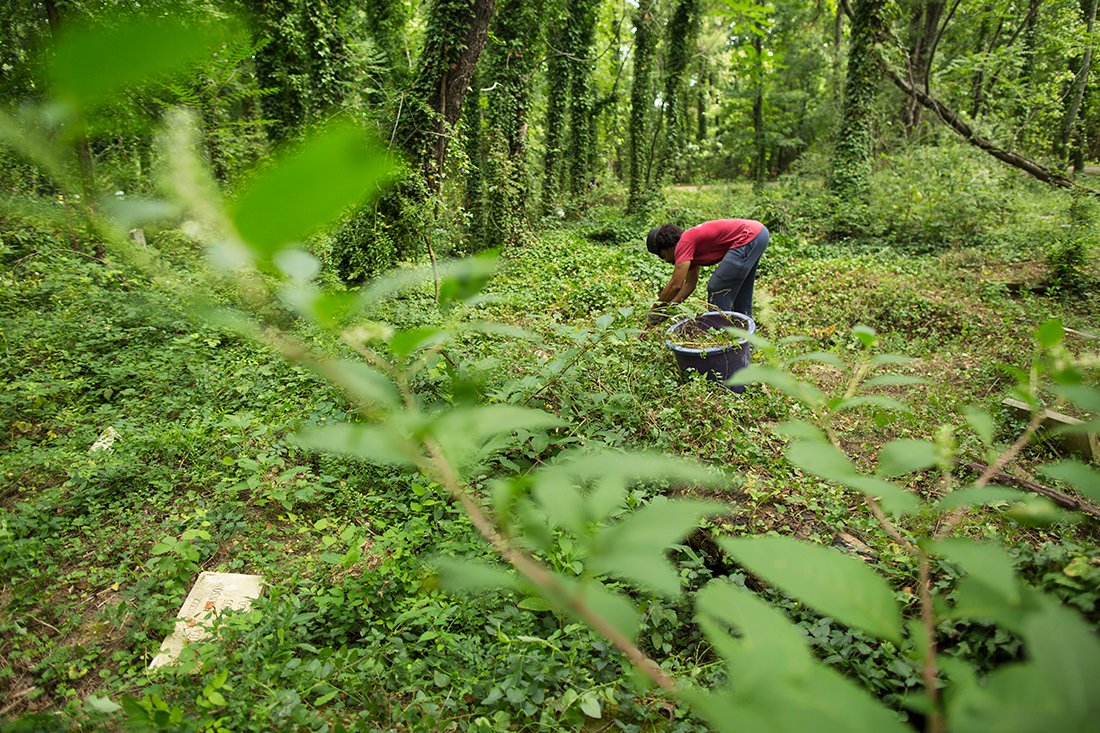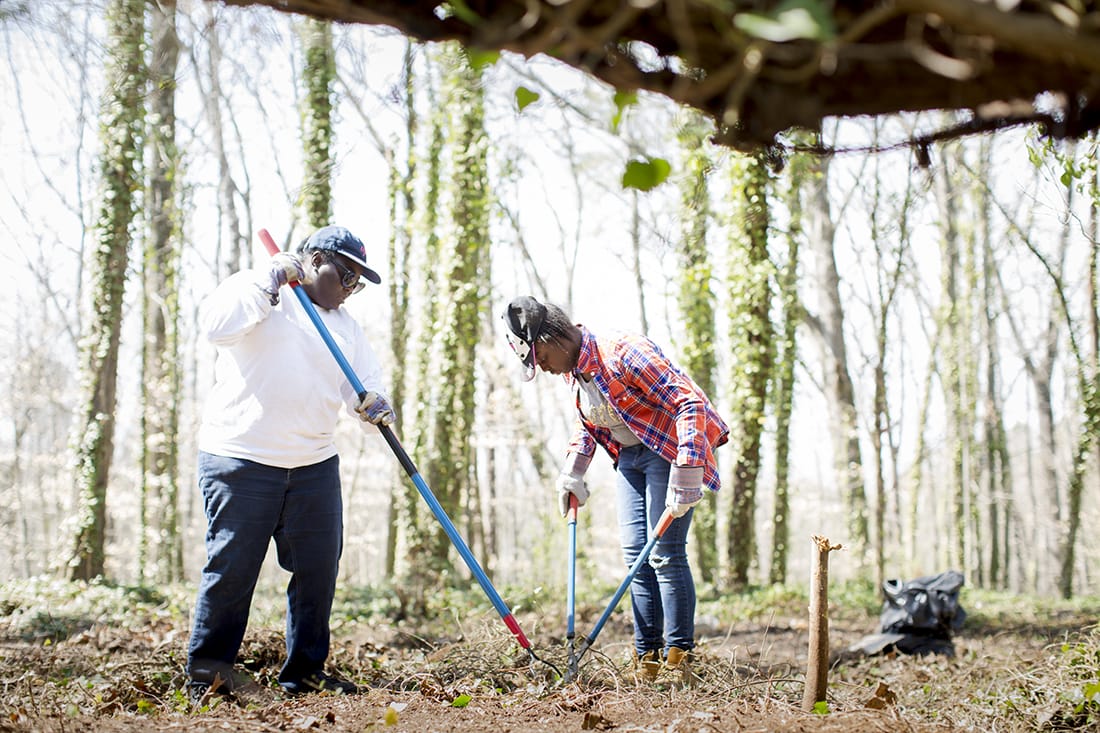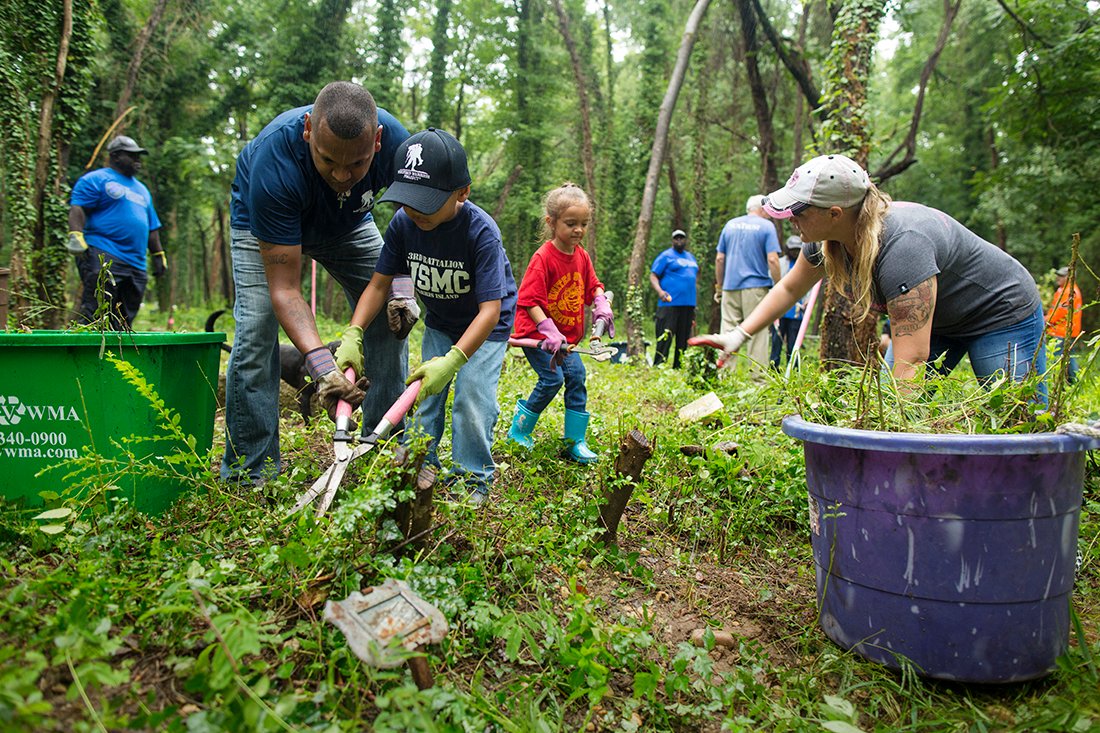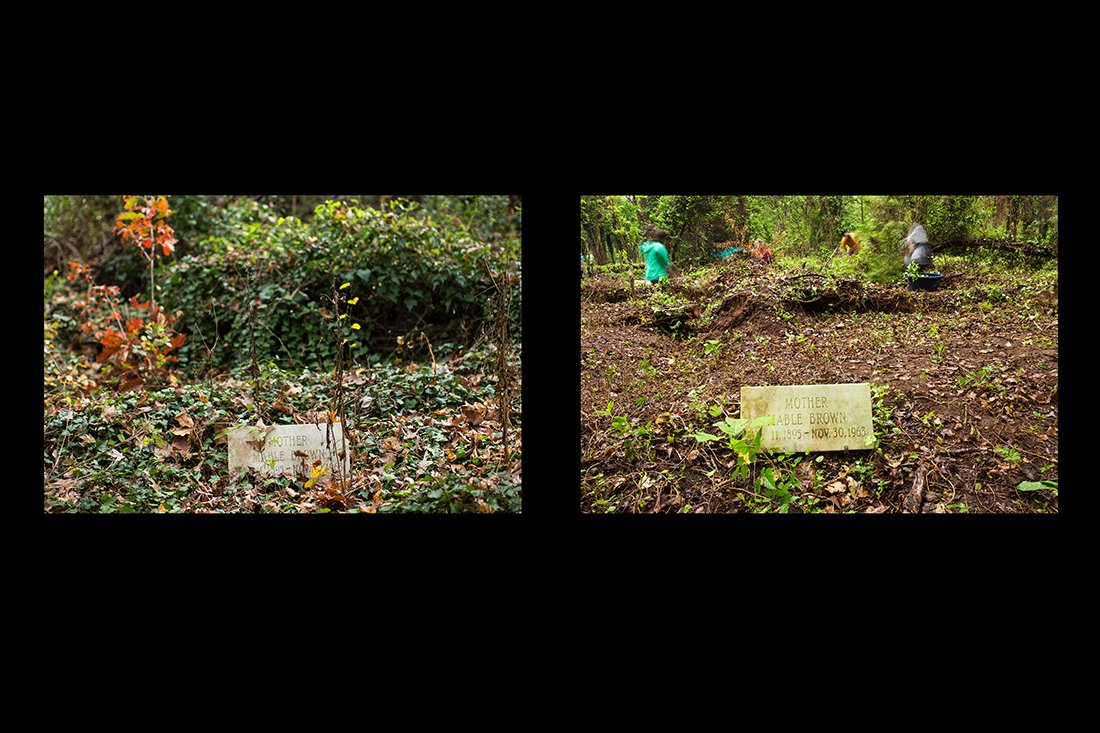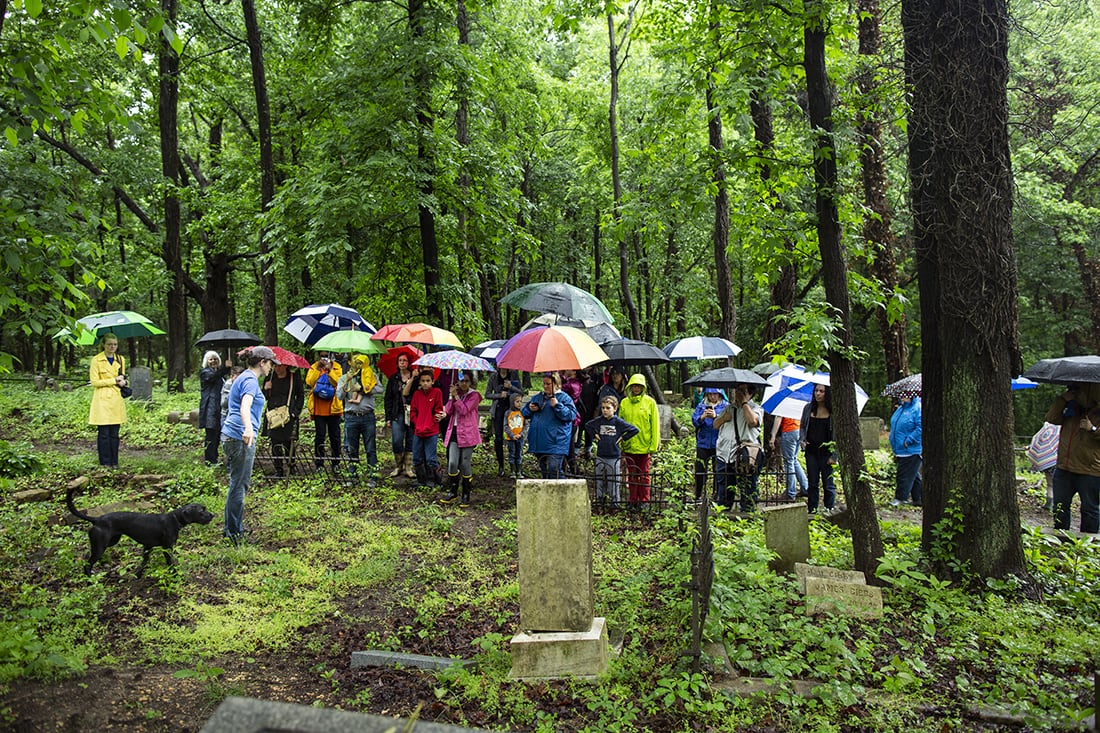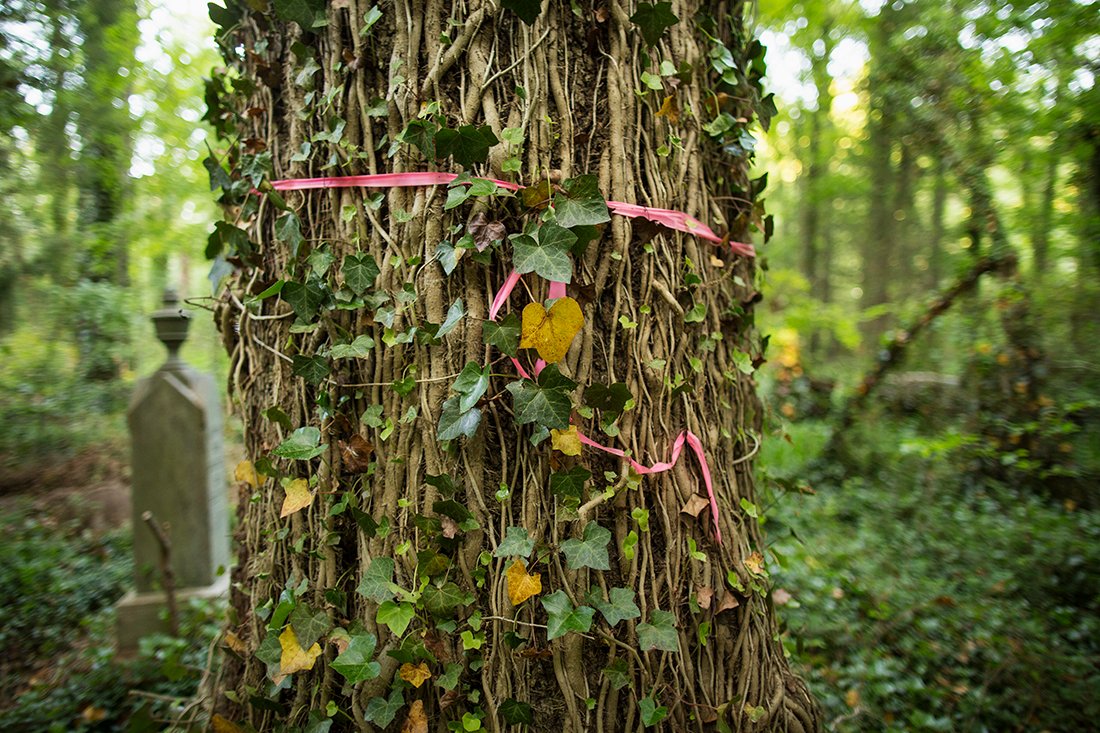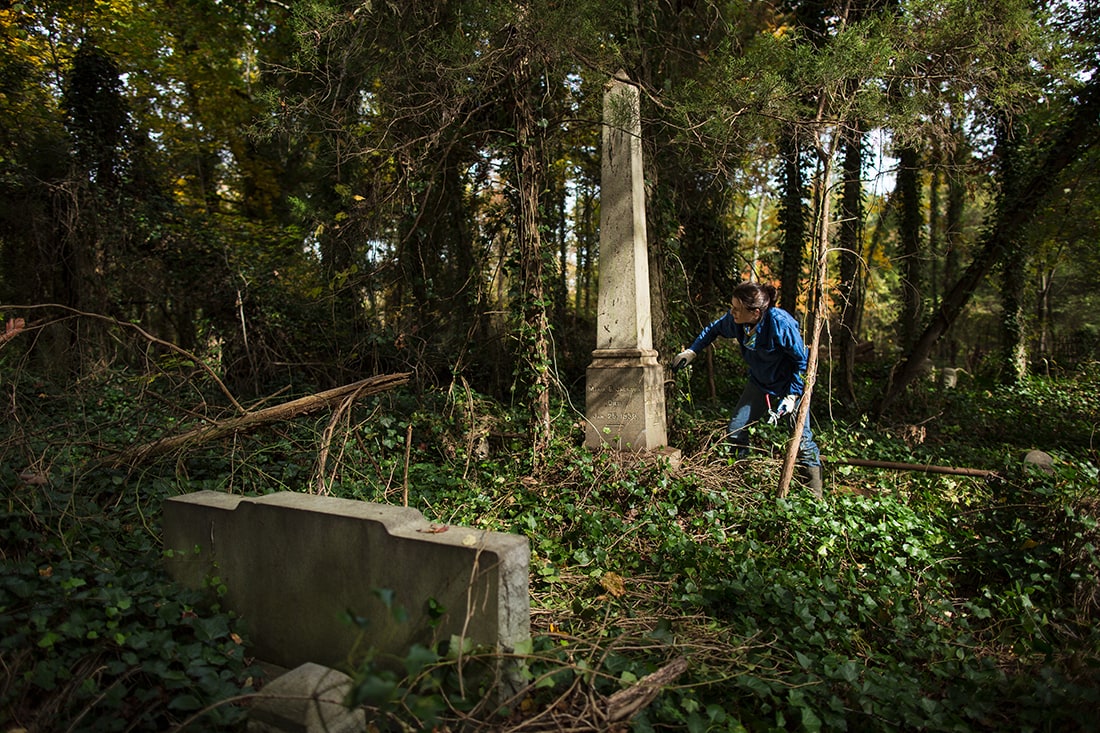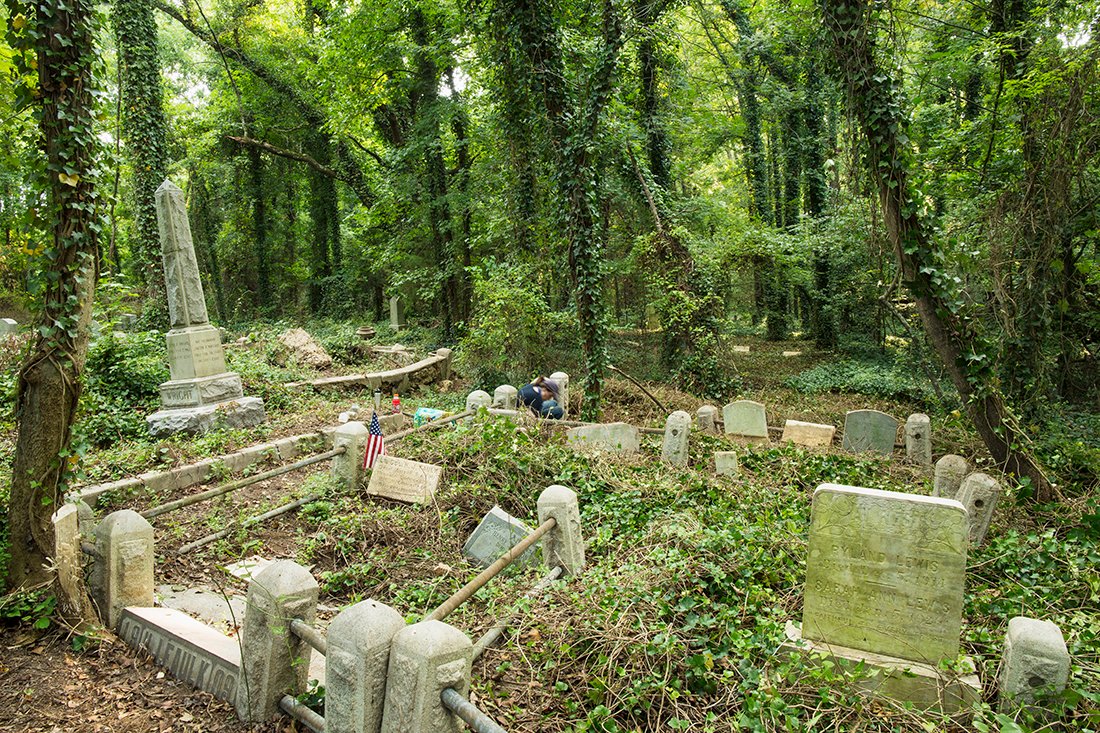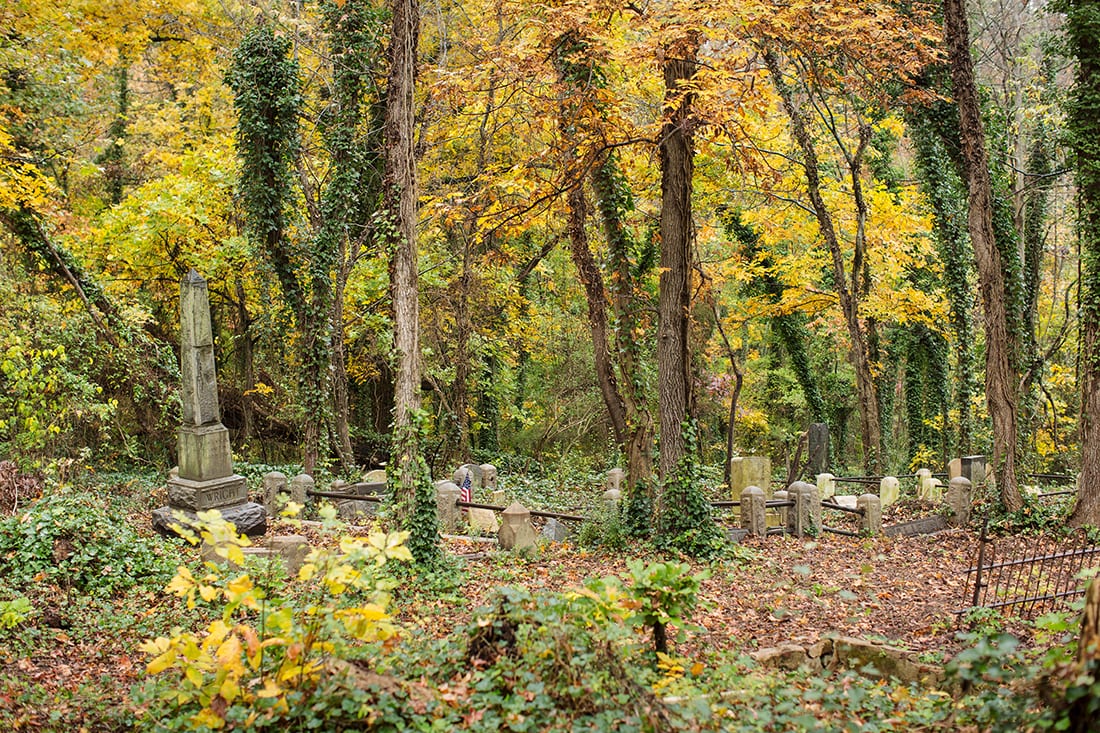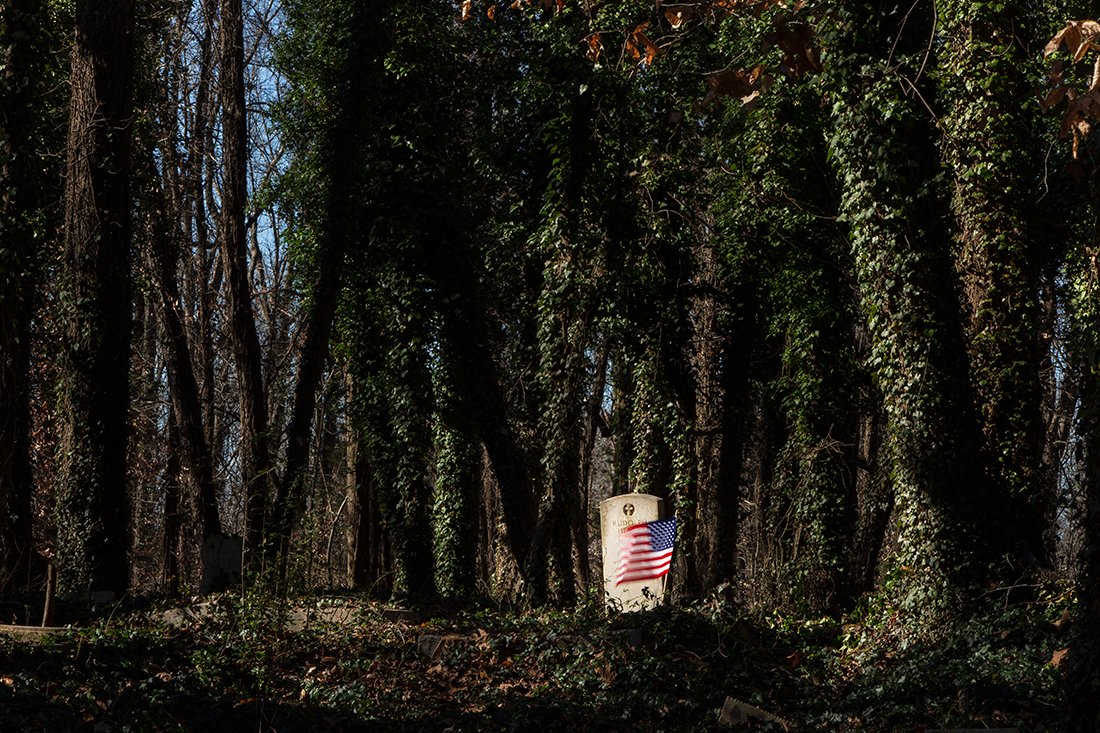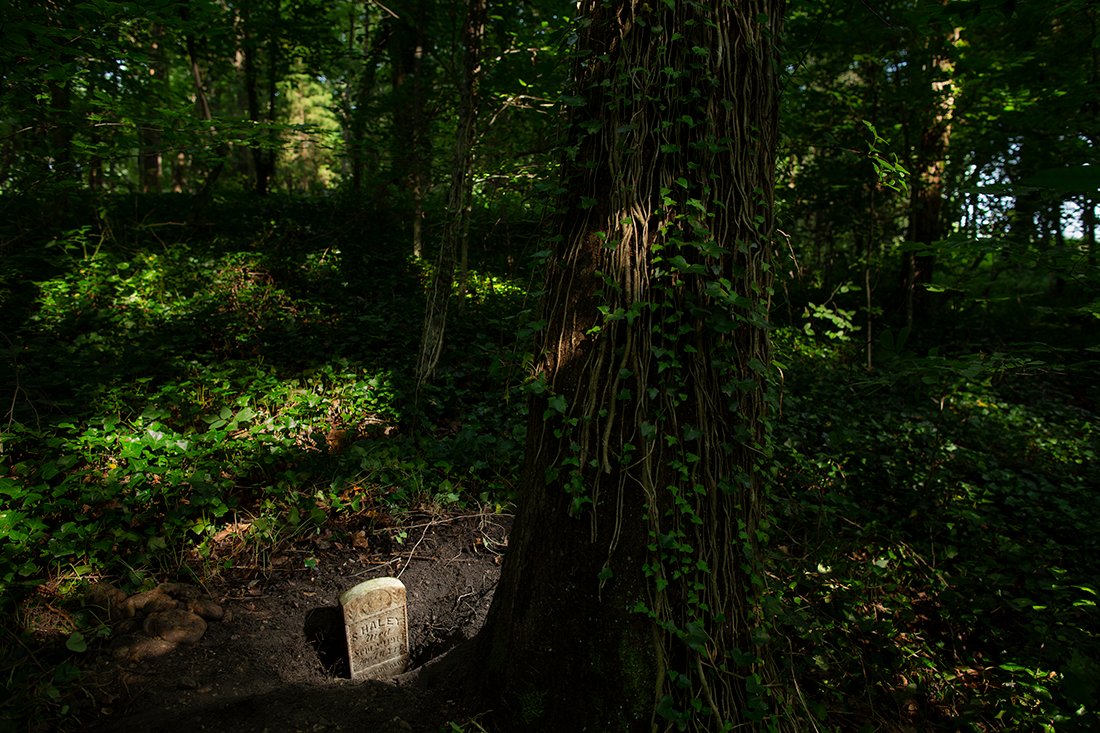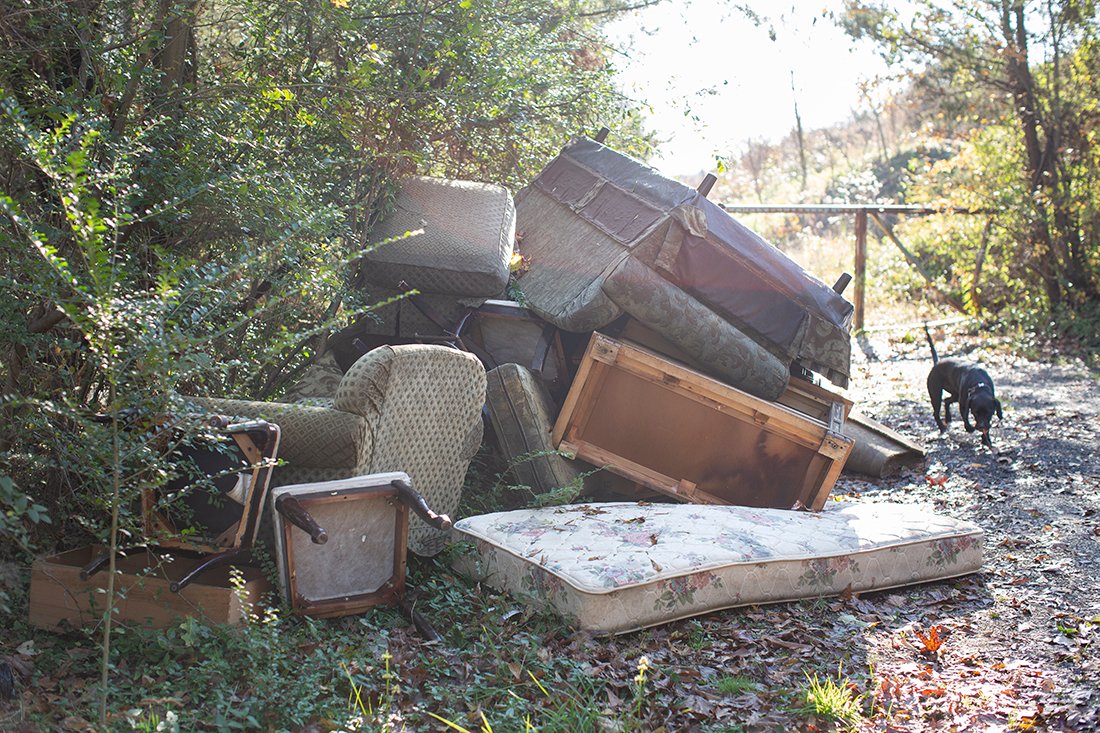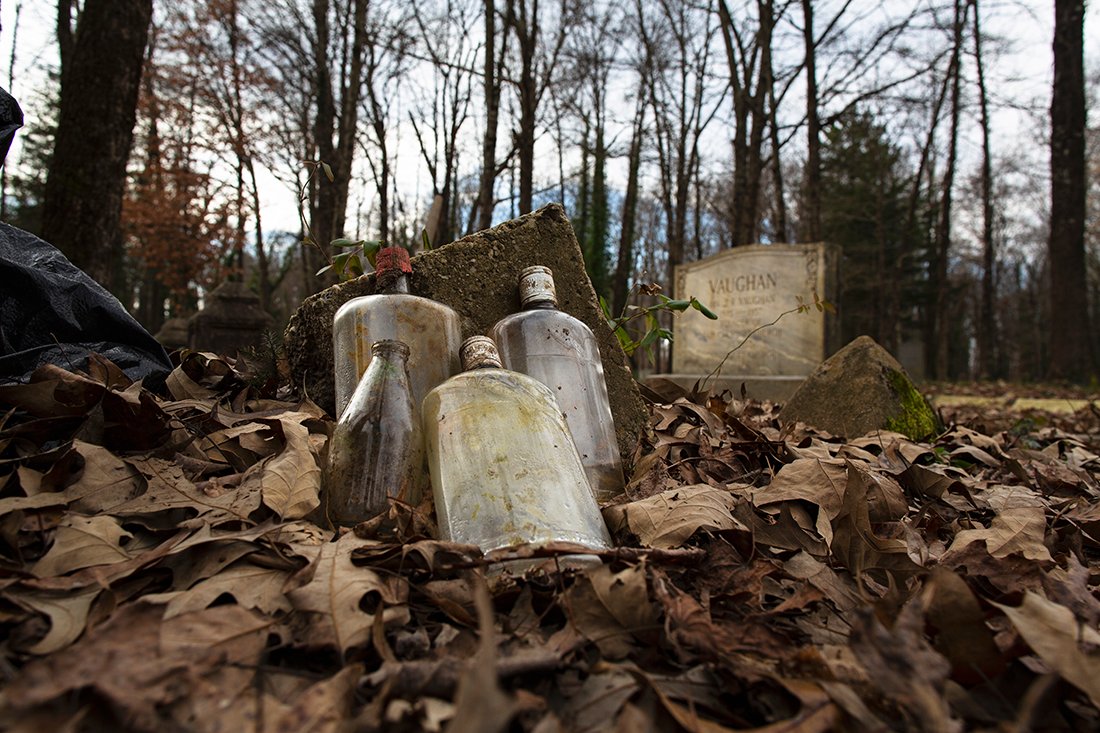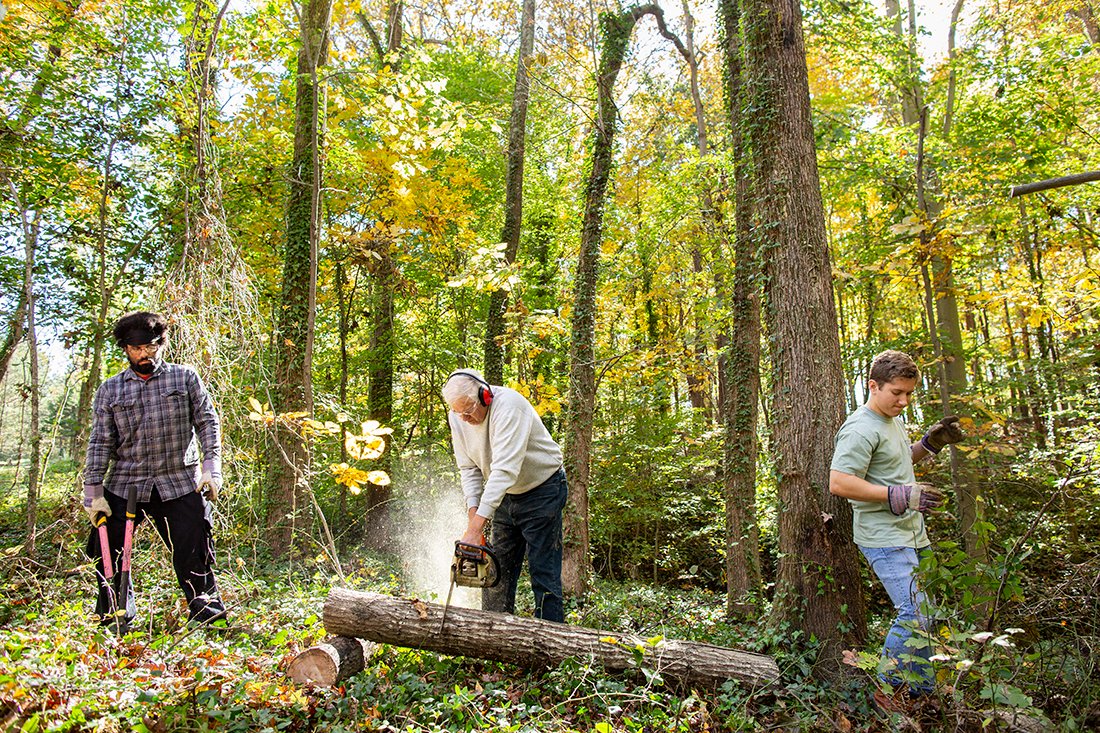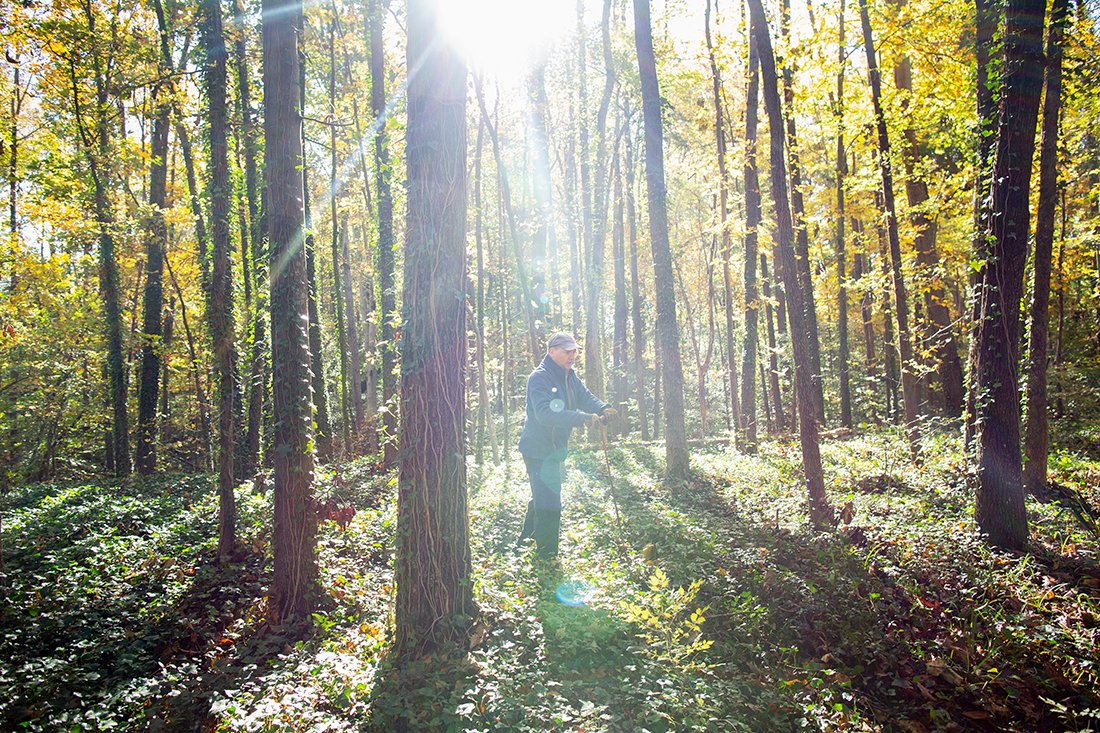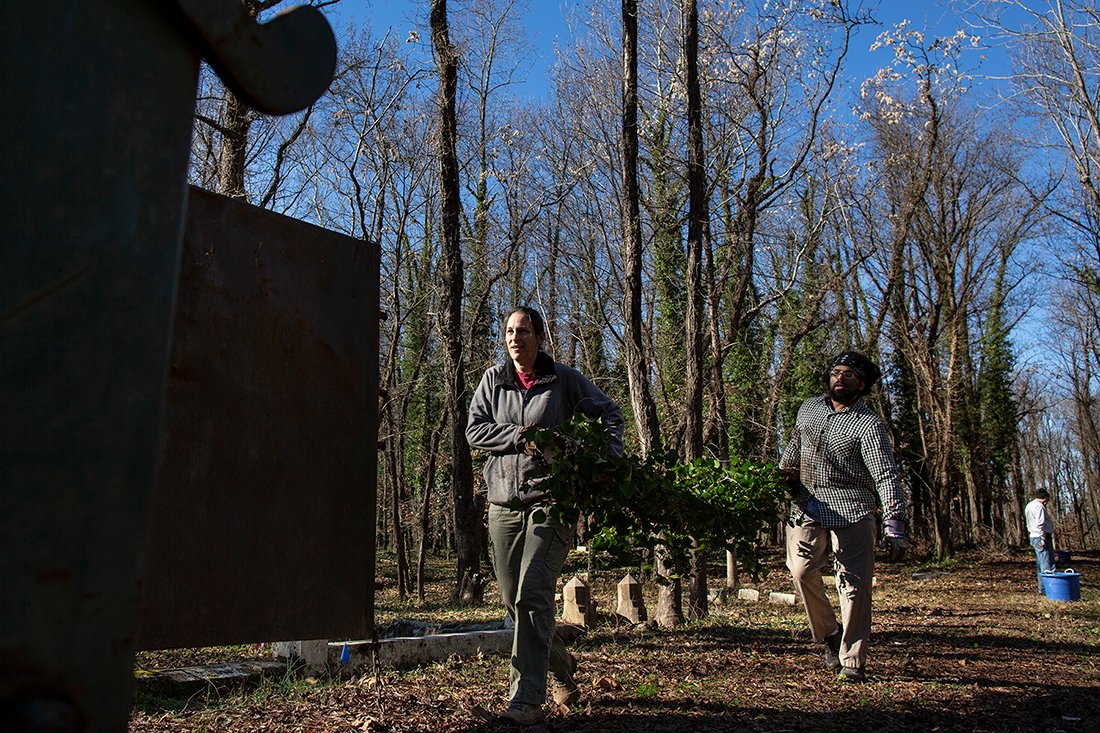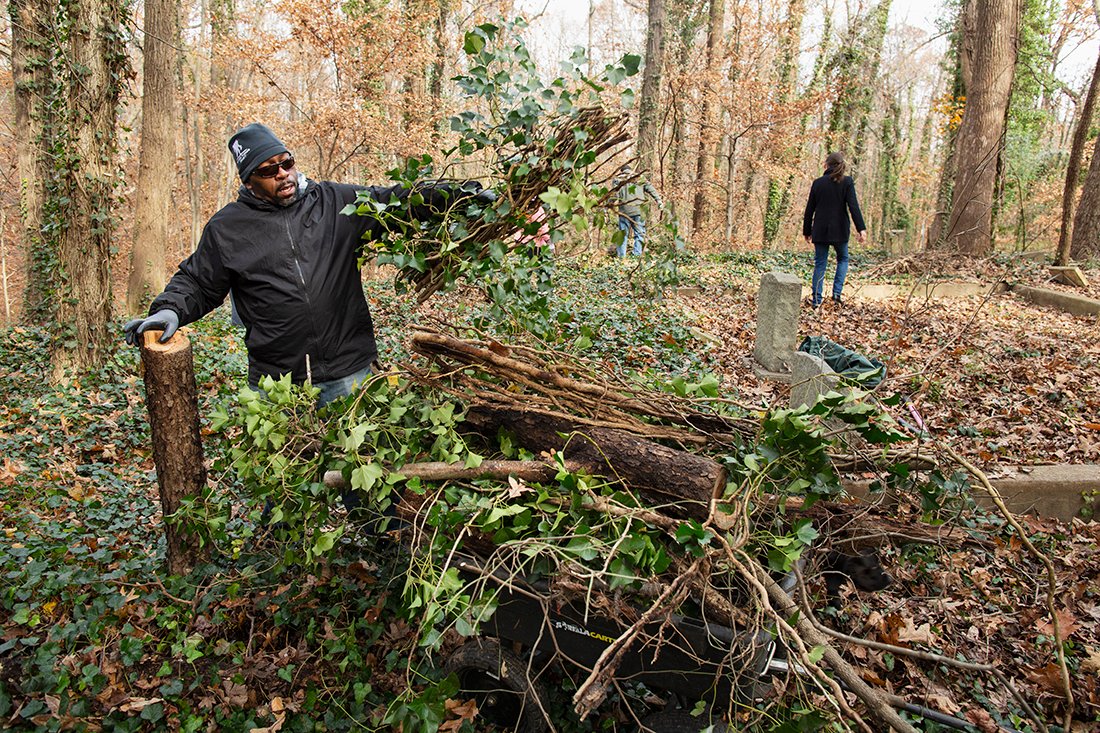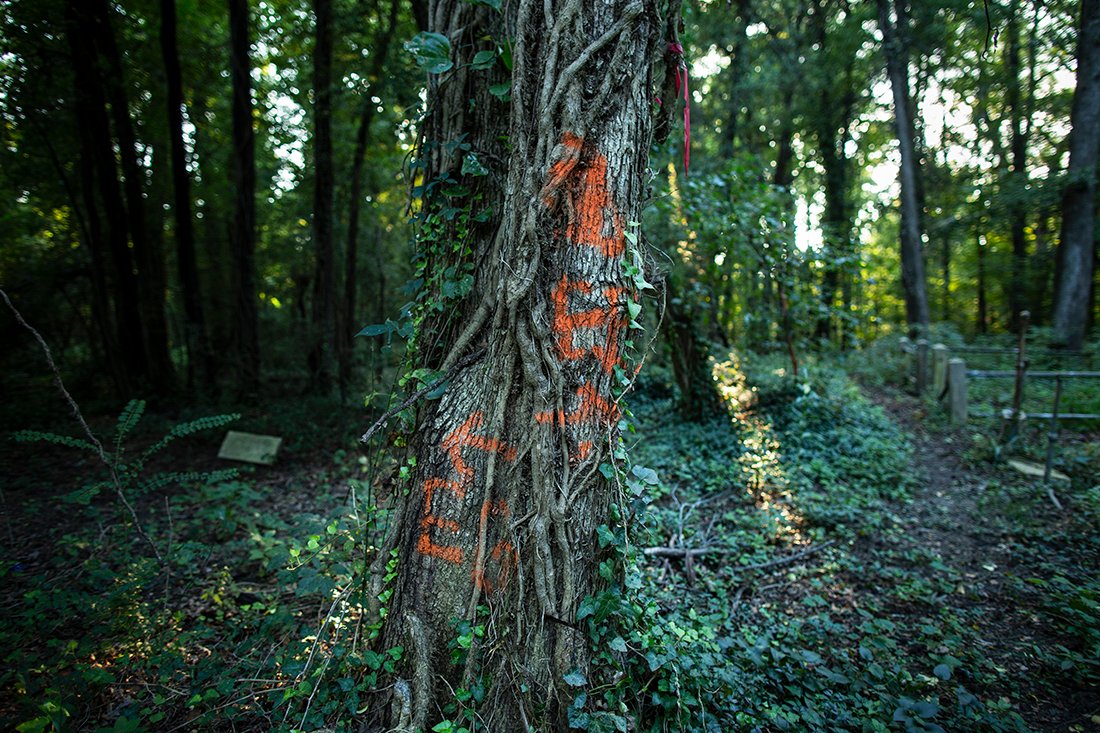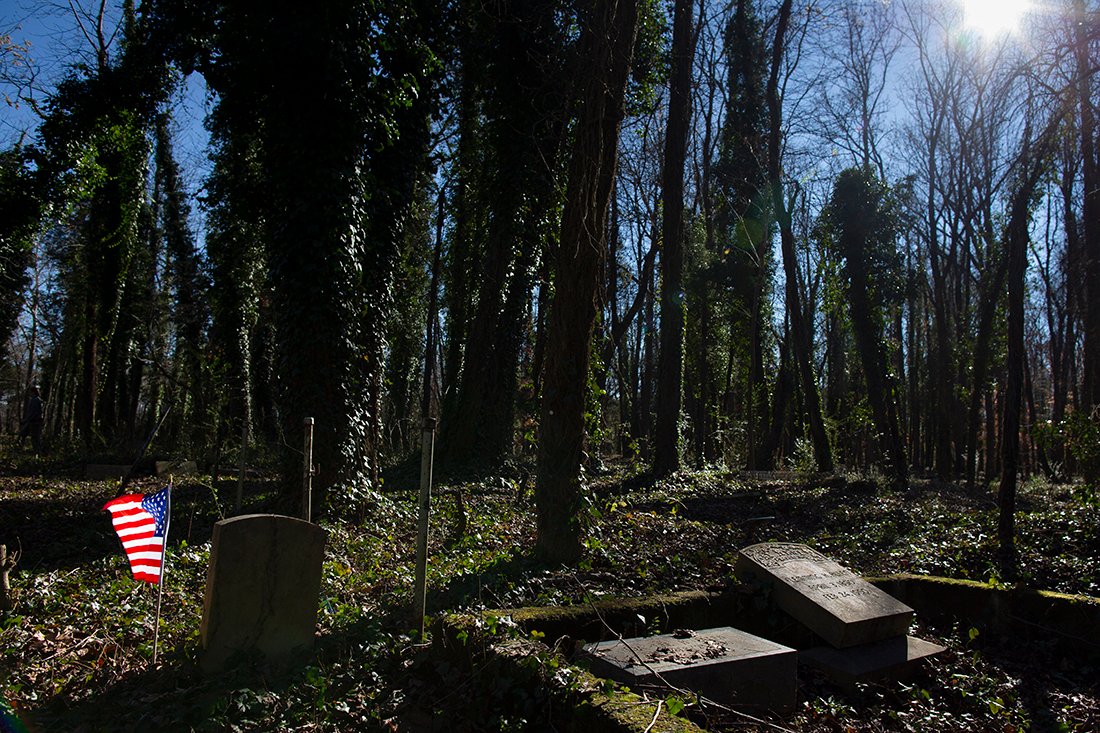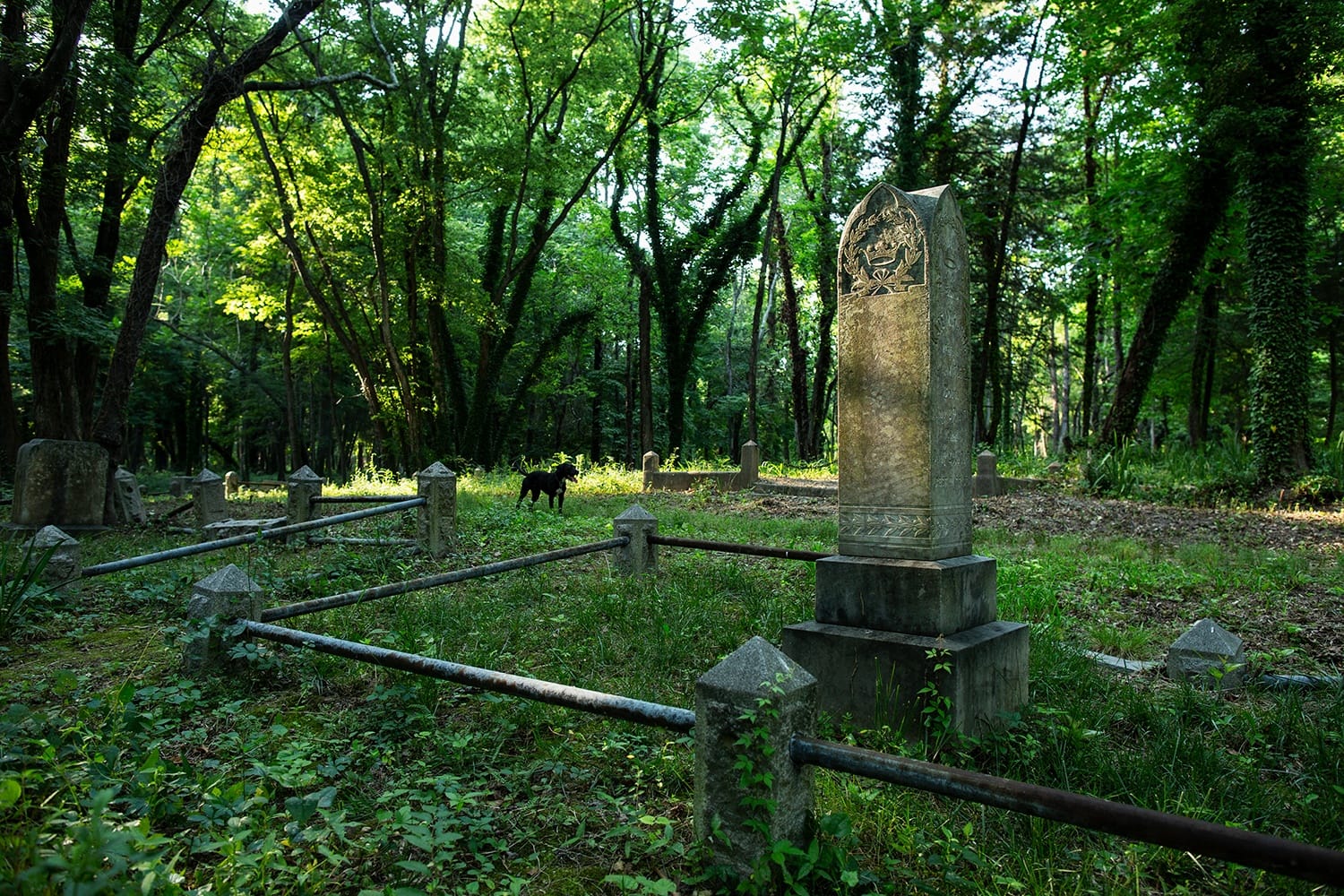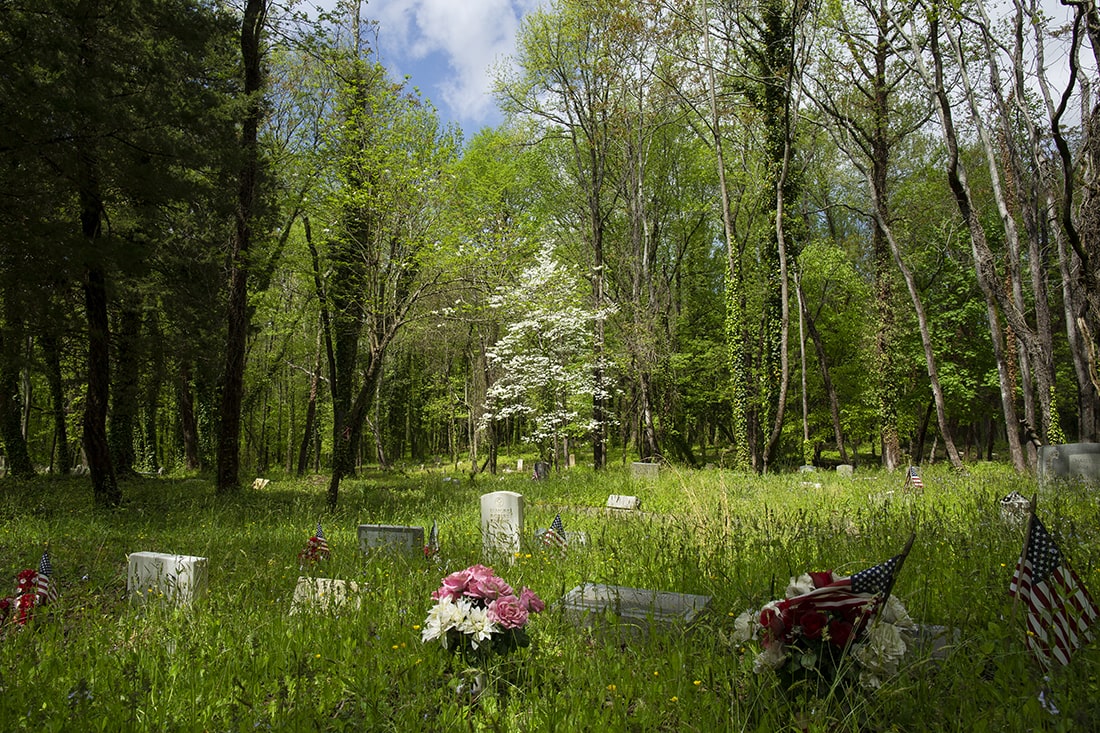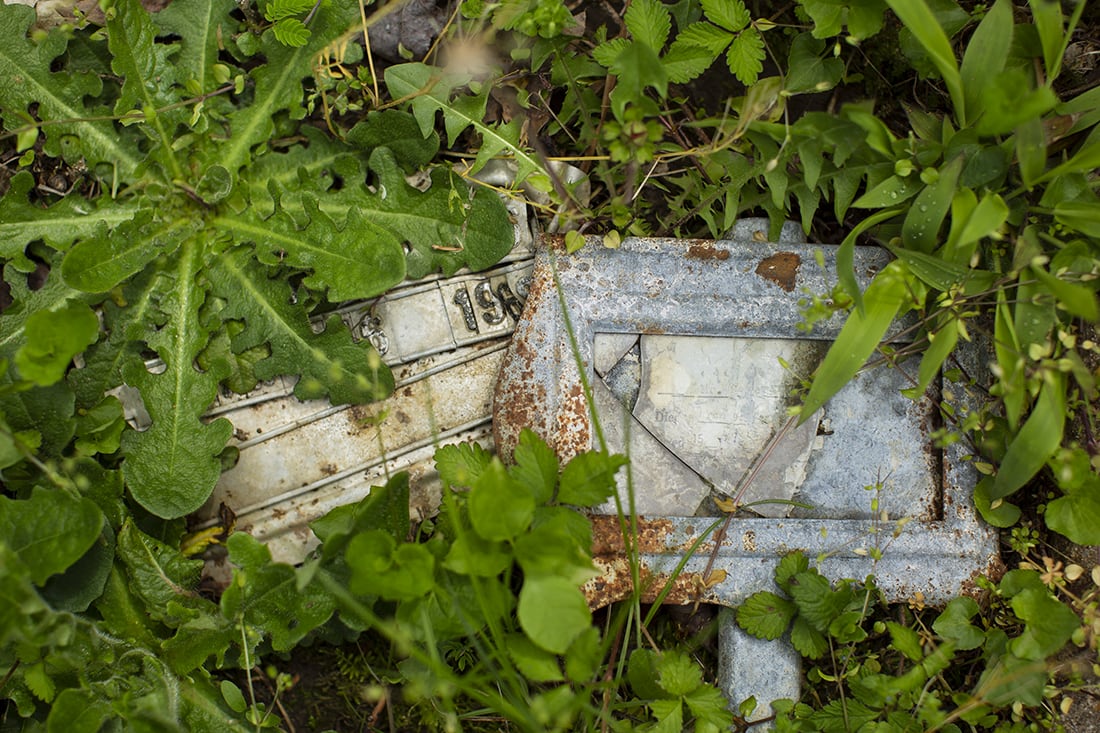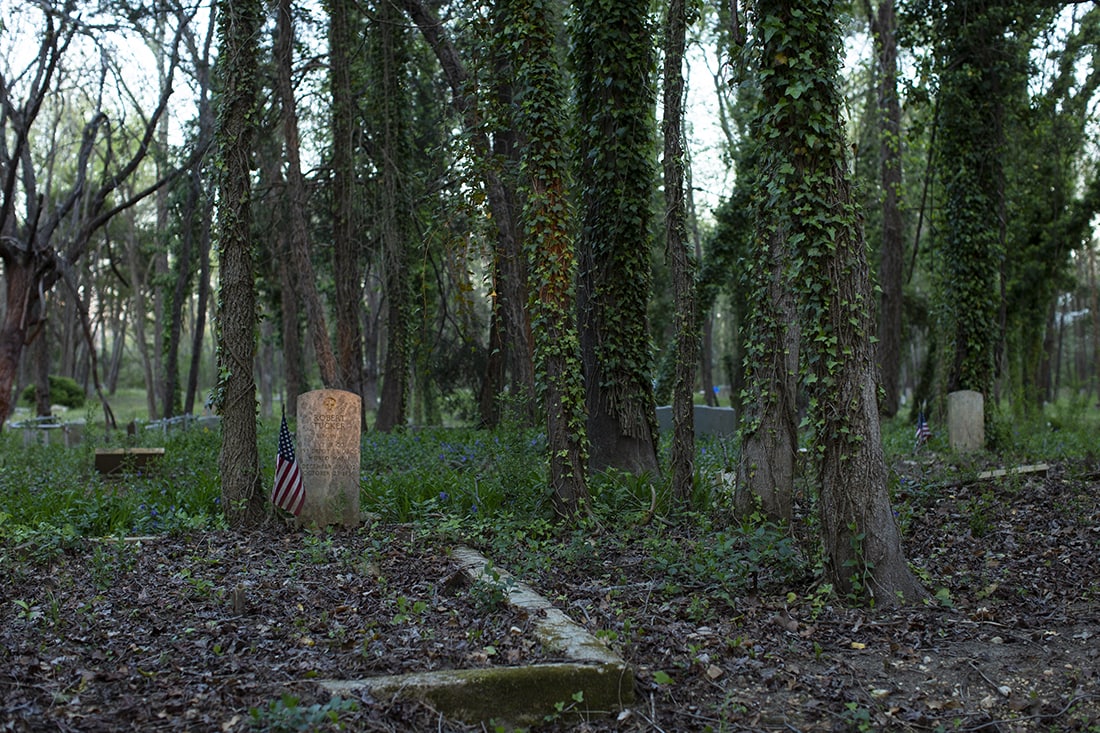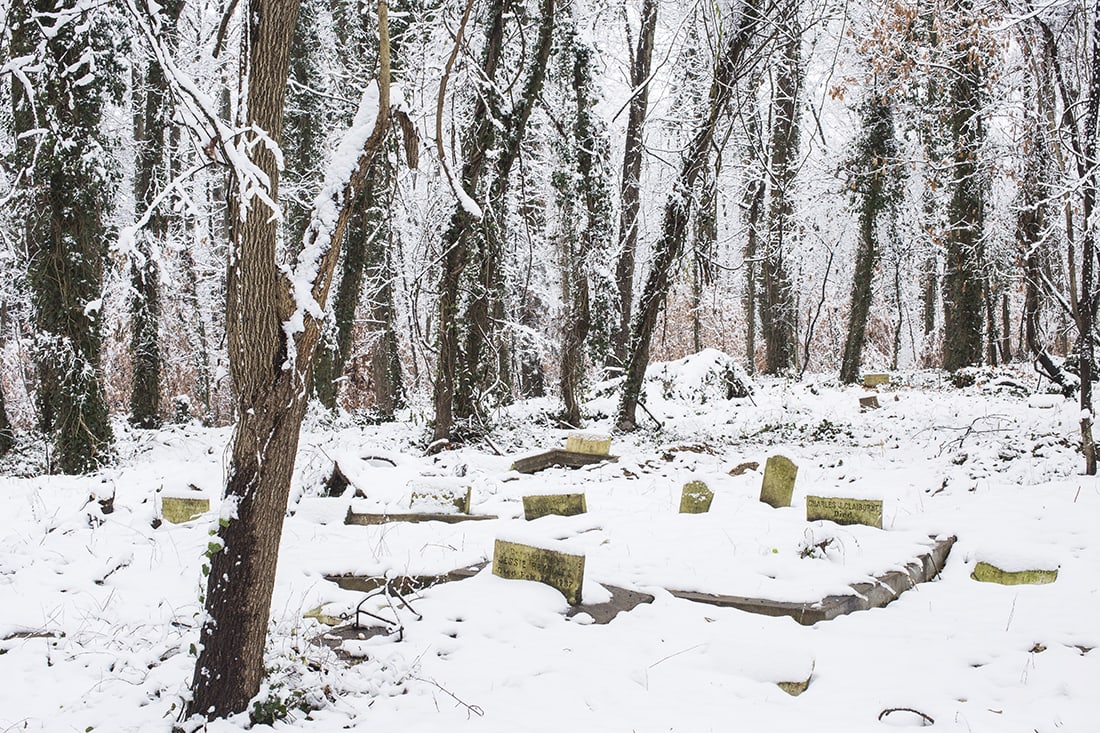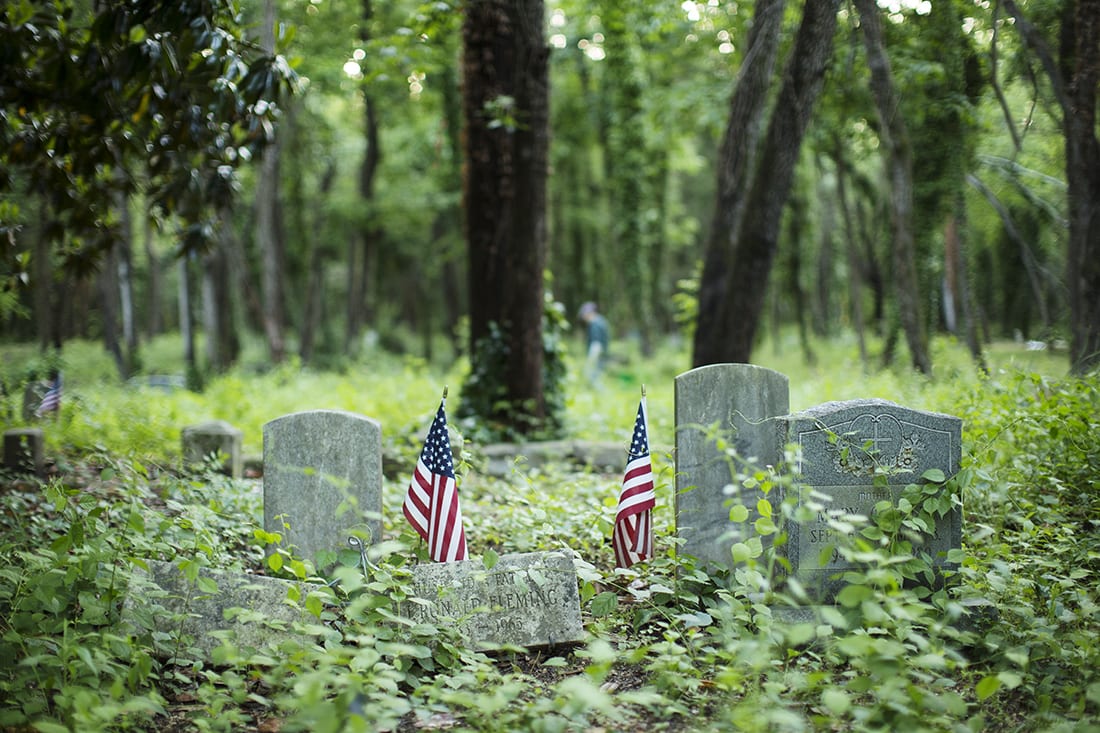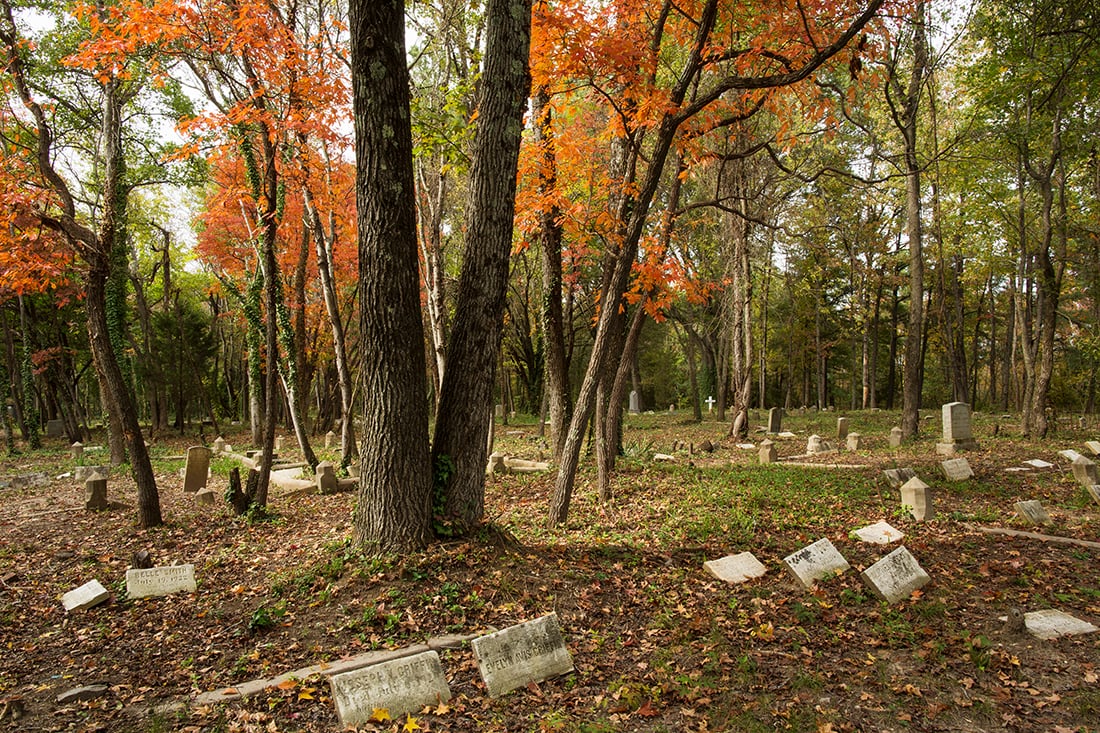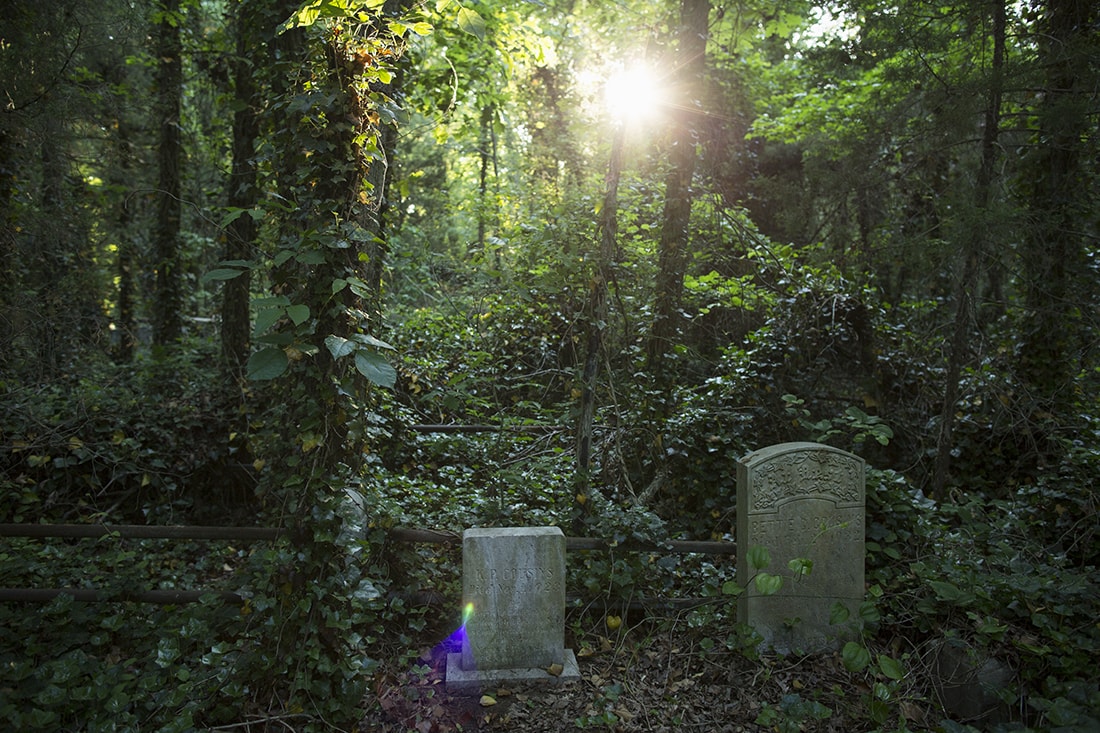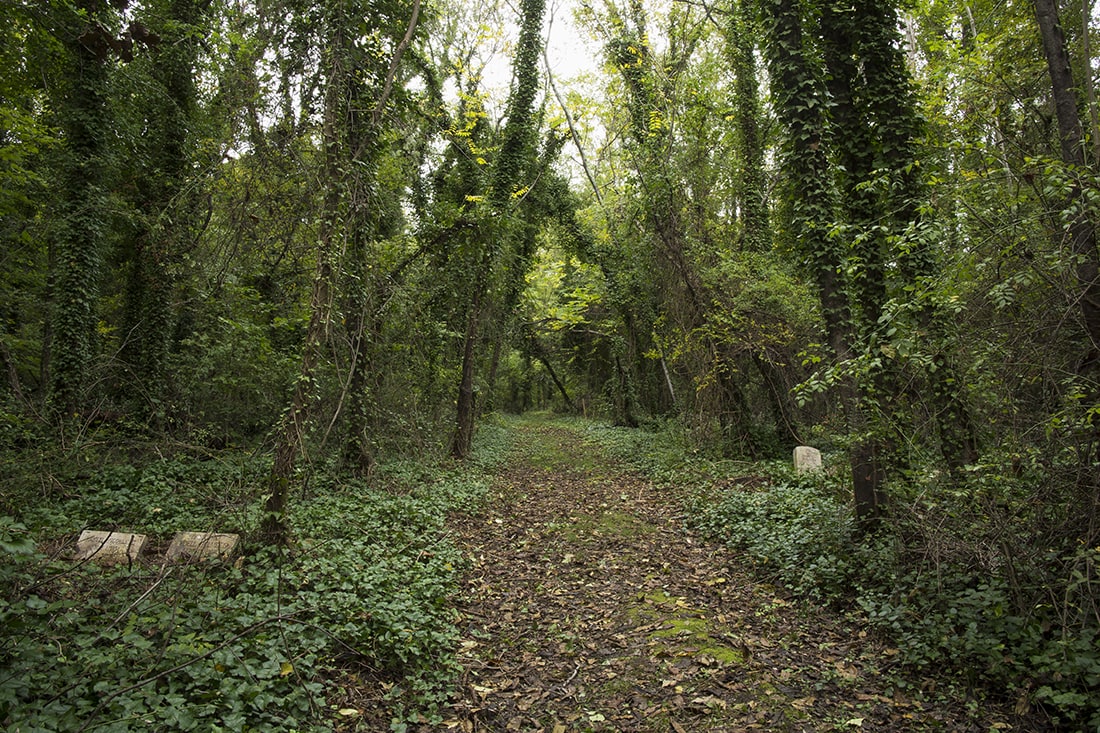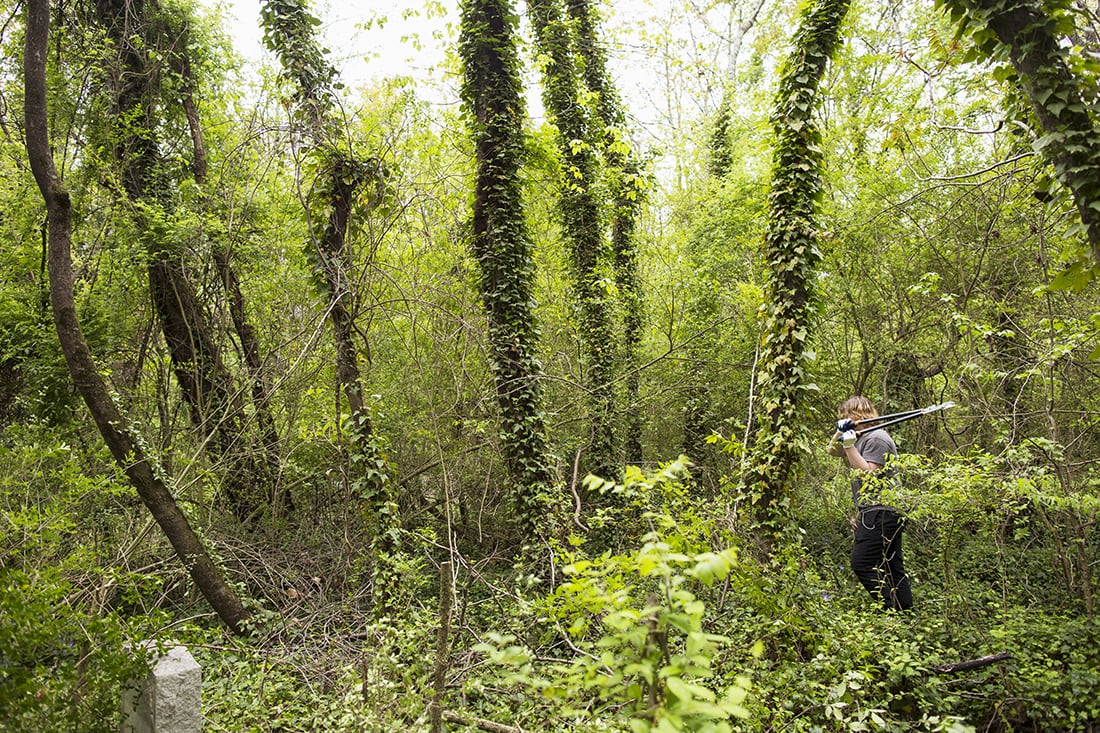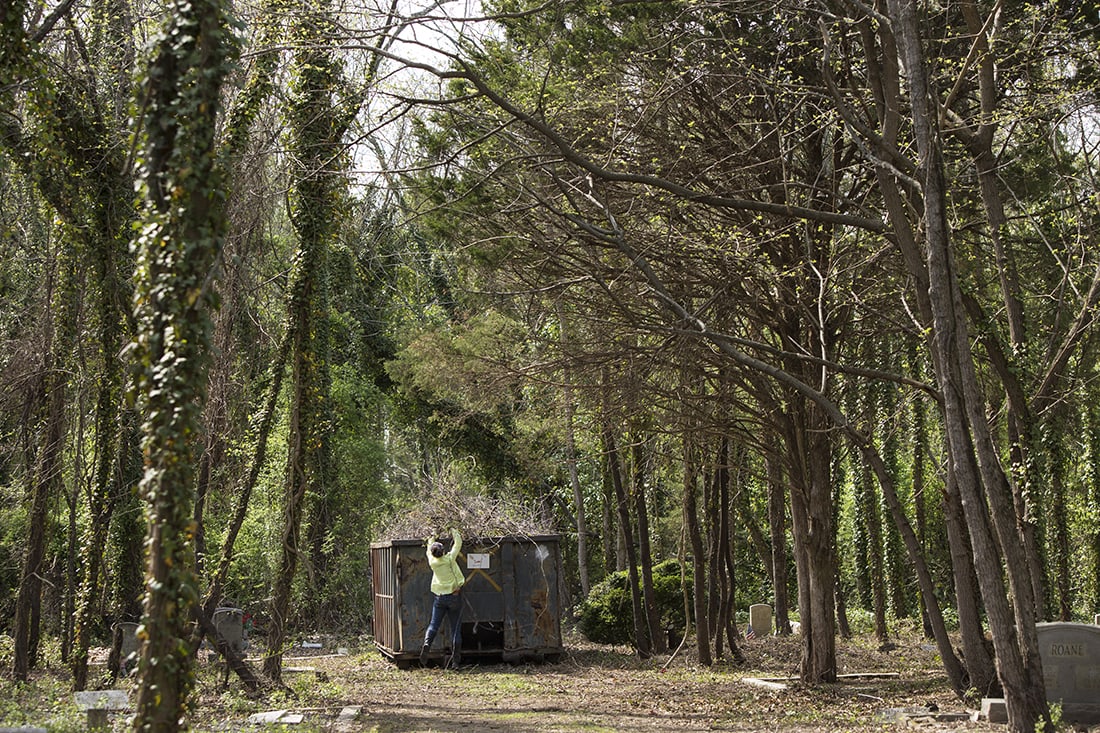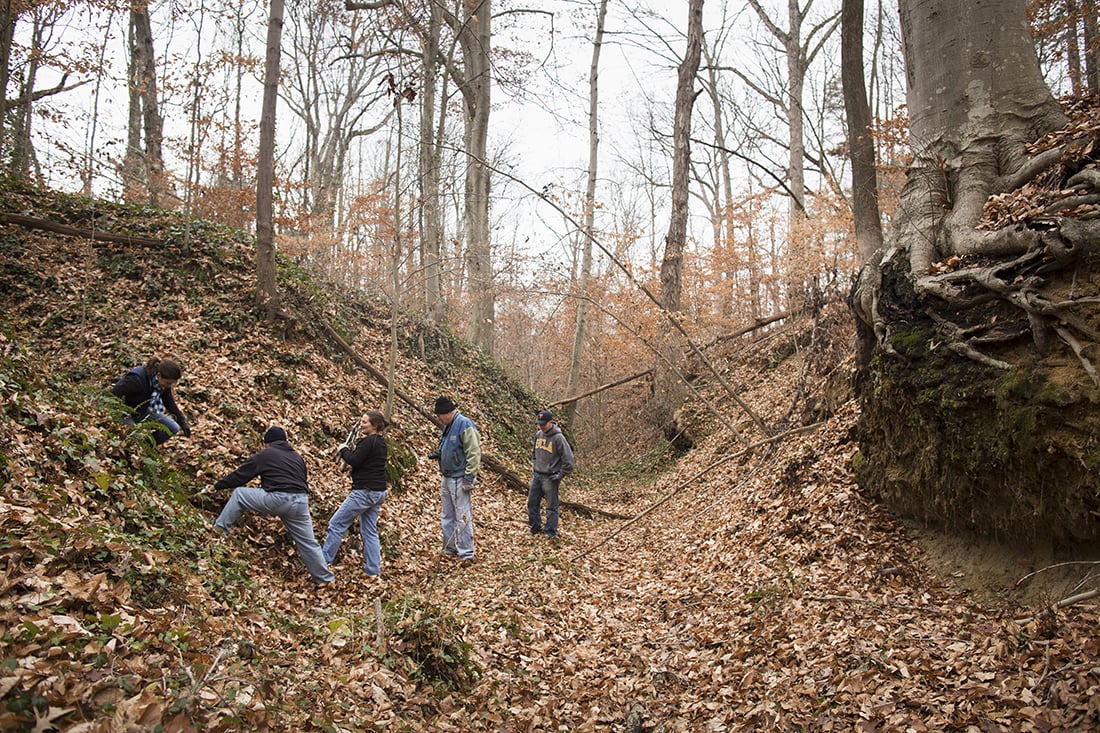"Notice!!! The East End Memorial Burial Association of Richmond informs the public that having purchased six (6) acres of land, situated in Henrico County . . . they are disposing of the same, in sections, half sections and at the following terms. Sections, $25.00 and Half Sections, $15.00. The situation of this Cemetery is high, dry and rolling and accessible to the Richmond Traction Street Railway and Seven Pines Railway lines, adjoining Oakwood Cemetery."
—The Richmond Planet, 8 February 1902
Much of what is now East End was originally incorporated as Greenwood Cemetery in 1891 by an association of prominent African Americans. After defaulting, they sold the property back to its original owners for five dollars. A new group of leading lights took over in 1897, when it became East End (though it continued to be known as Greenwood well into the 20th century). Other back-and-forths followed. No arrangements for perpetual care were ever made, so when the community that supported the cemetery began to disperse under the weight of many forces — the attack on African American civil rights and economic power in the wake of Reconstruction; the physical destruction of Jackson Ward; the demise of de jure segregation, which opened burial grounds in the city proper to African Americans — East End deteriorated.
When John Shuck and a small band of volunteers began working at the cemetery in the summer of 2013, it had all but disappeared from view. In the place of an immaculate, formally laid-out burial ground stood a sixteen-acre forest, nearly impenetrable in parts. English ivy, an invasive species, had taken over, climbing the trees and thickening over time, blanketing the thousands of graves so completely that only the tallest headstones peeked through here and there. Some families with loved ones buried at East End had struggled mightily to maintain their plots over the years, carving small islands out of the overgrowth; others could no longer find their way in the tangle of vines.
In the past seven years, volunteers — under the leadership of the Friends of East End — have reclaimed roughly ten acres of cemetery, almost entirely by hand. More than 3,300 grave markers have been uncovered and documented; at least that many unmarked graves have been found. Given the density of burials, we estimate that more than seventeen thousand people are interred at East End, but in the absence of records, we may never know for certain.

